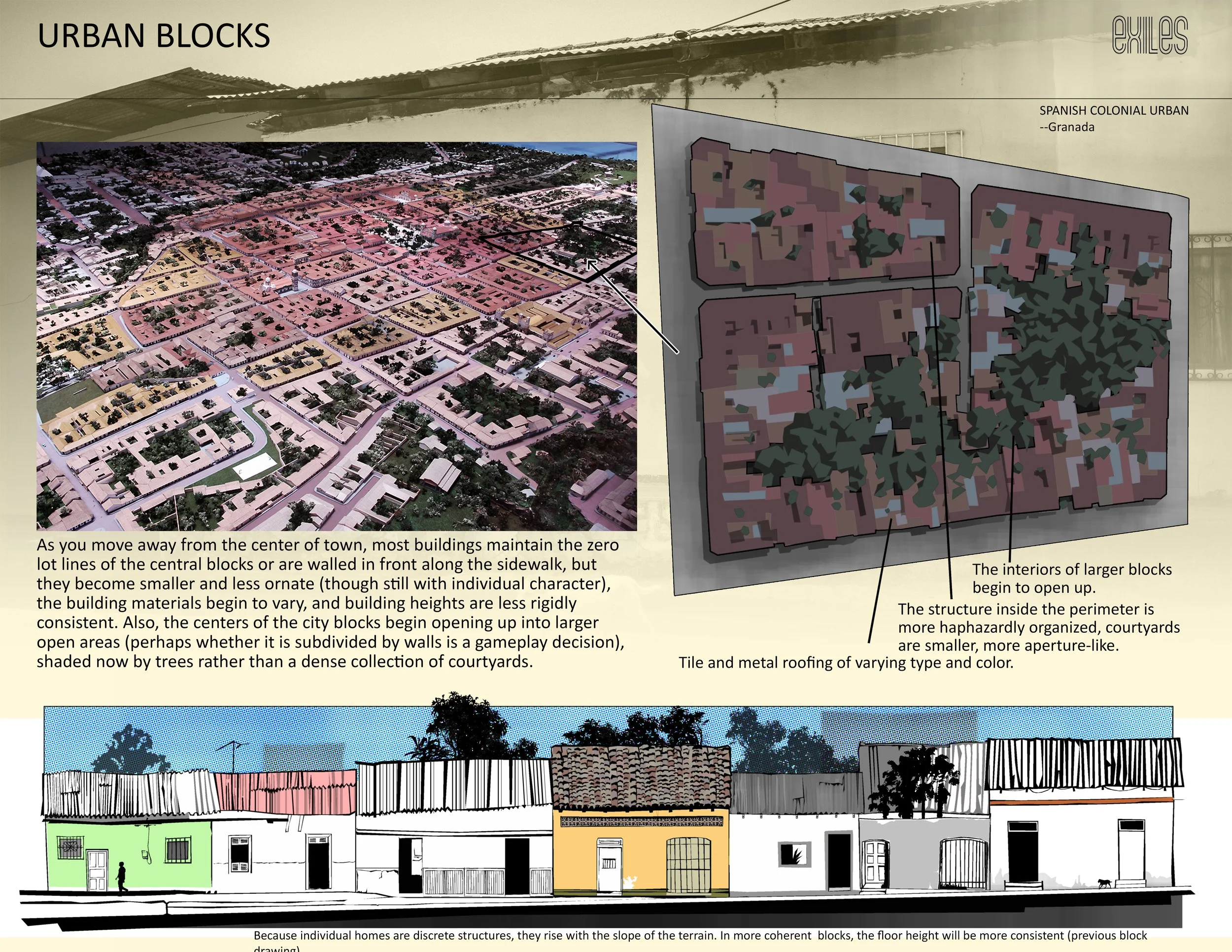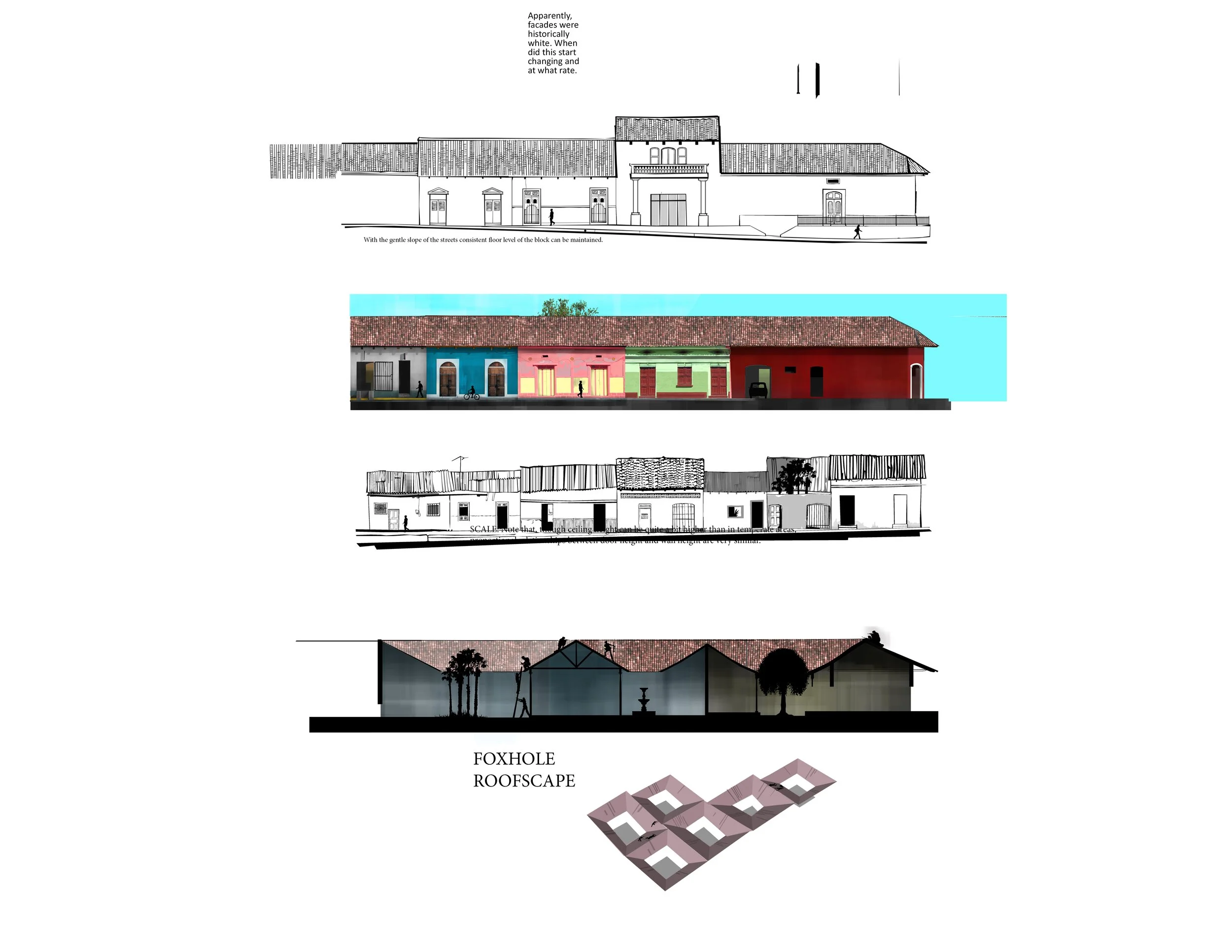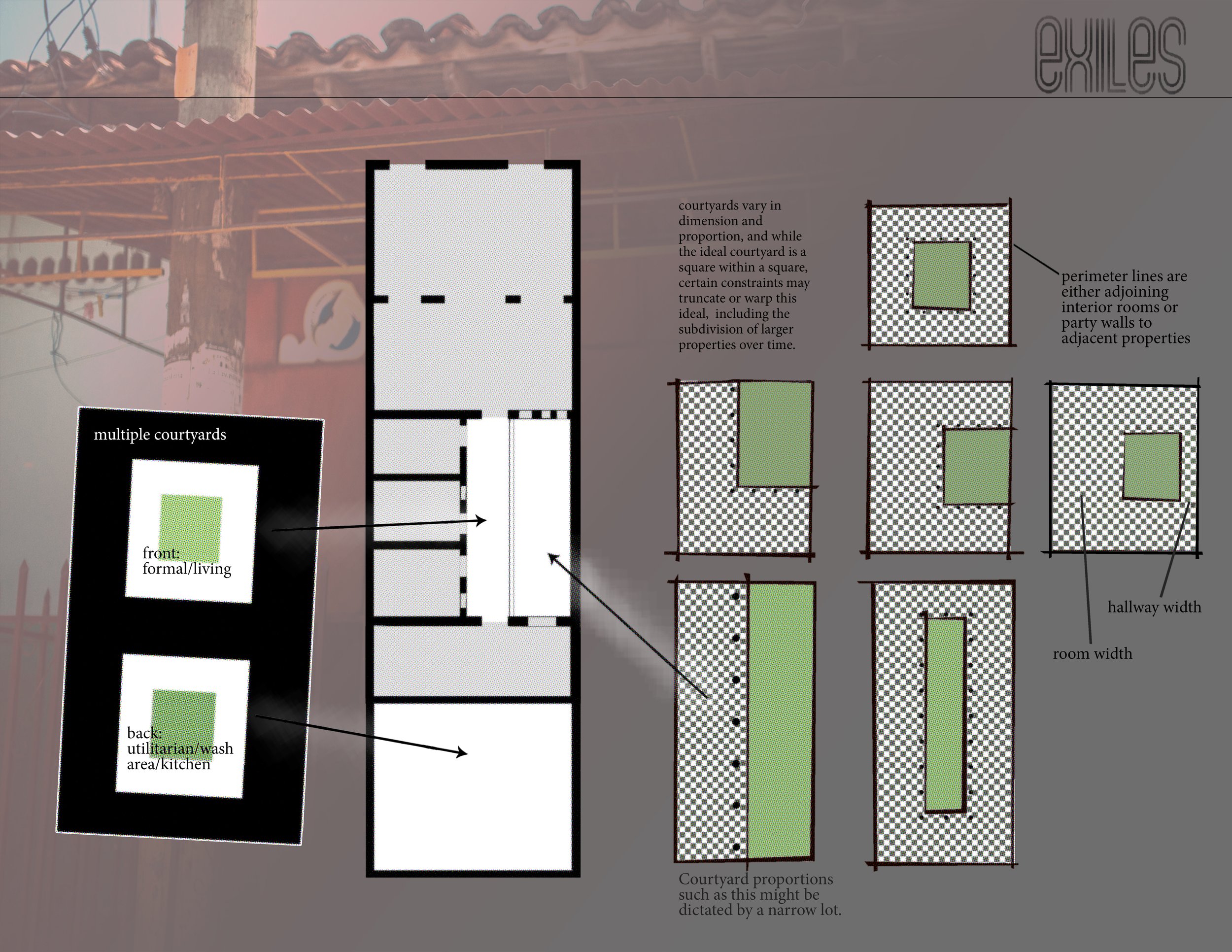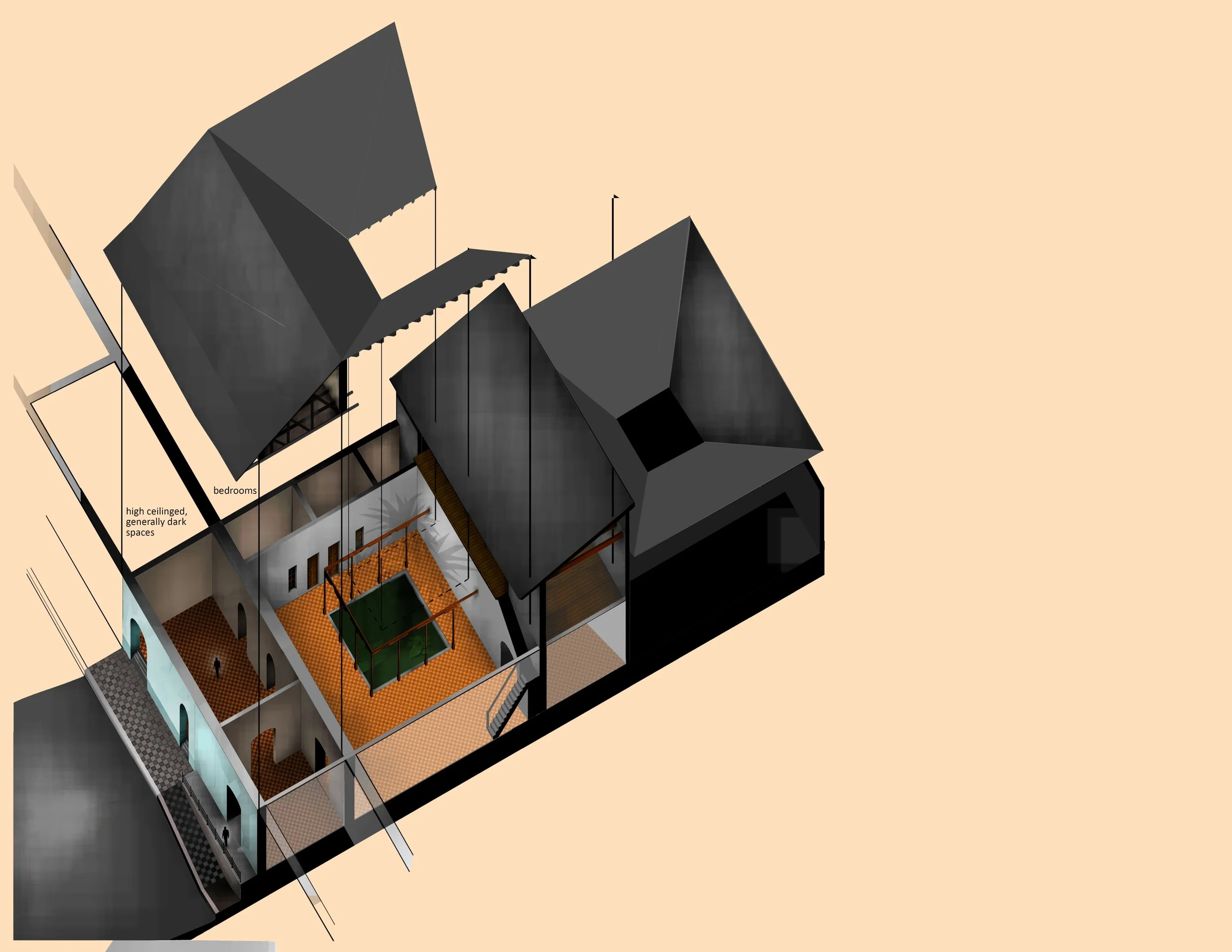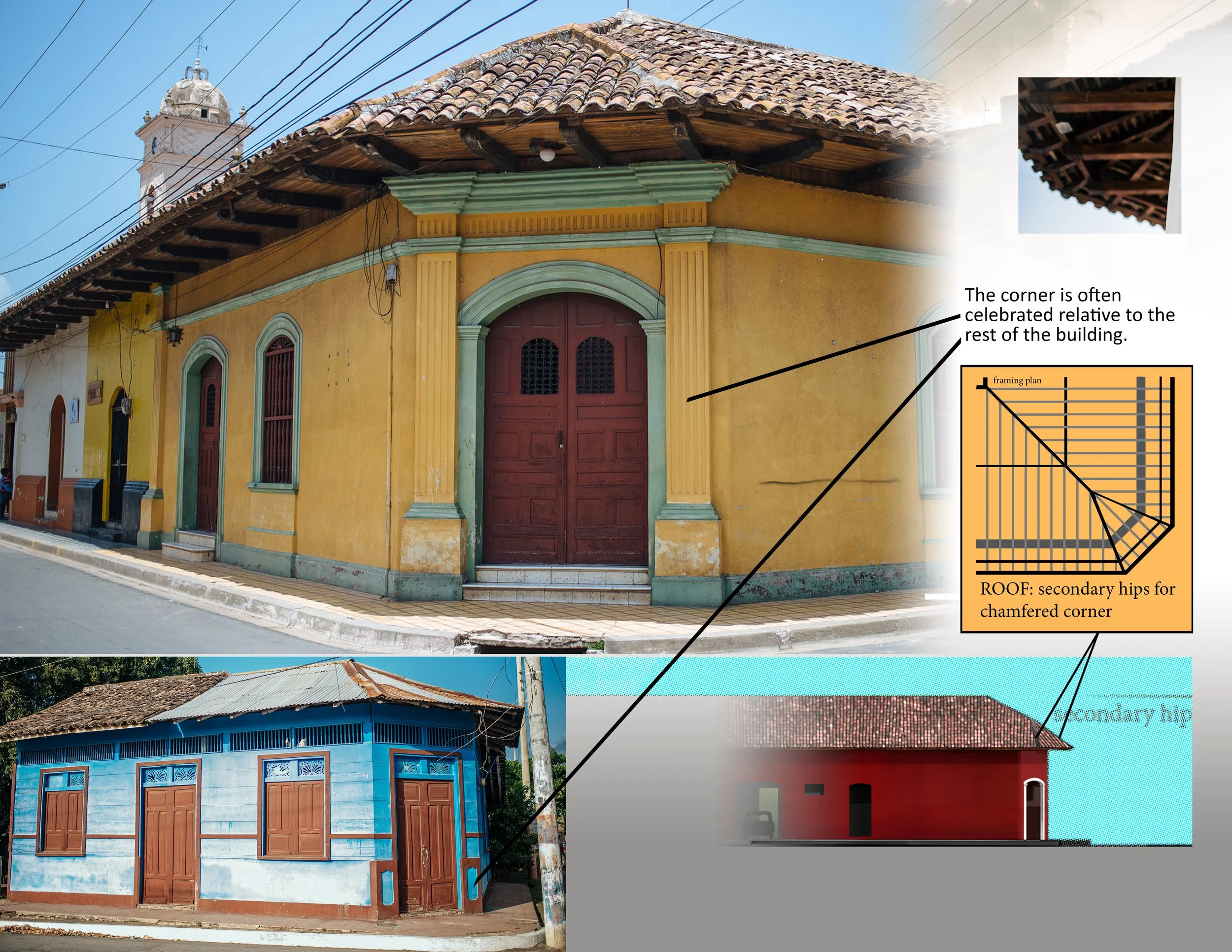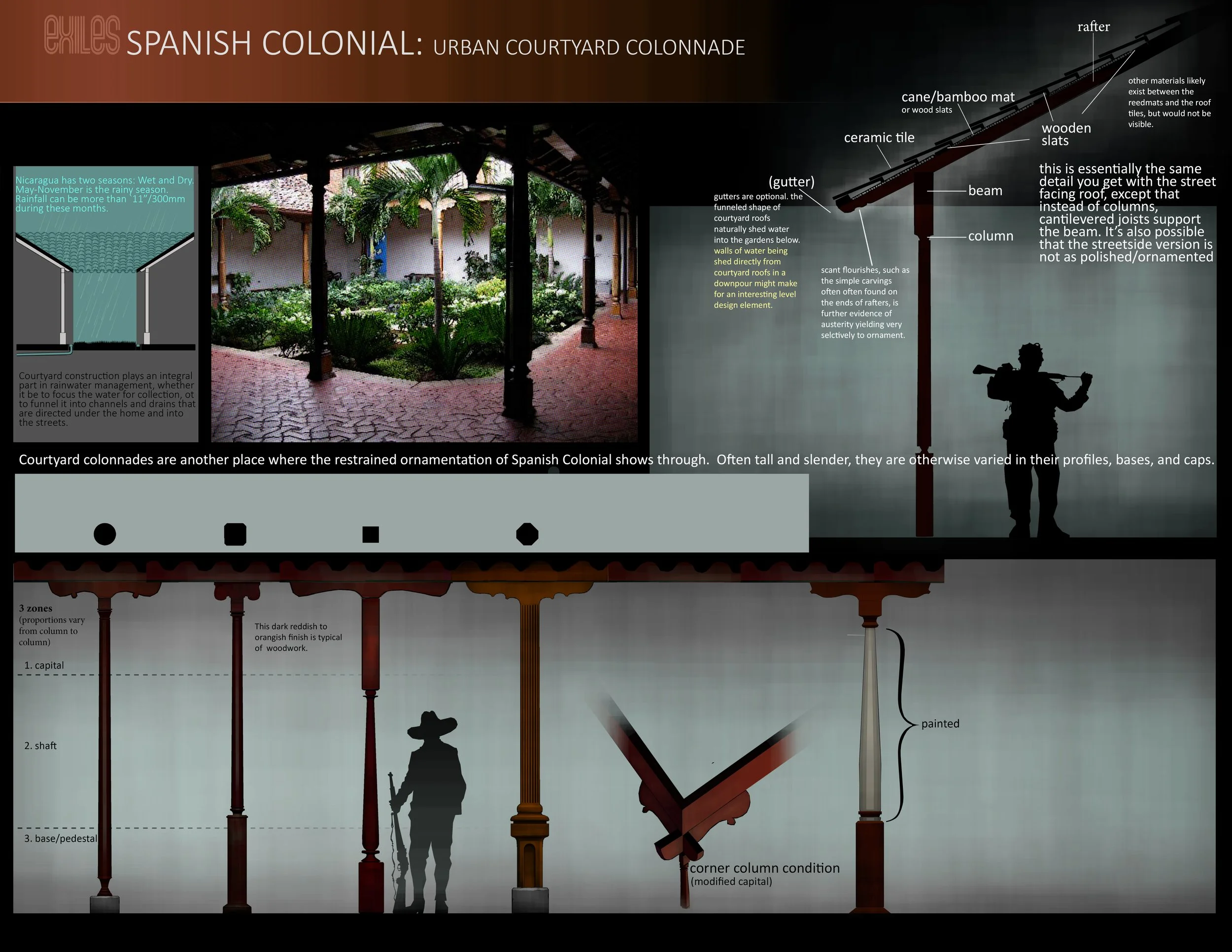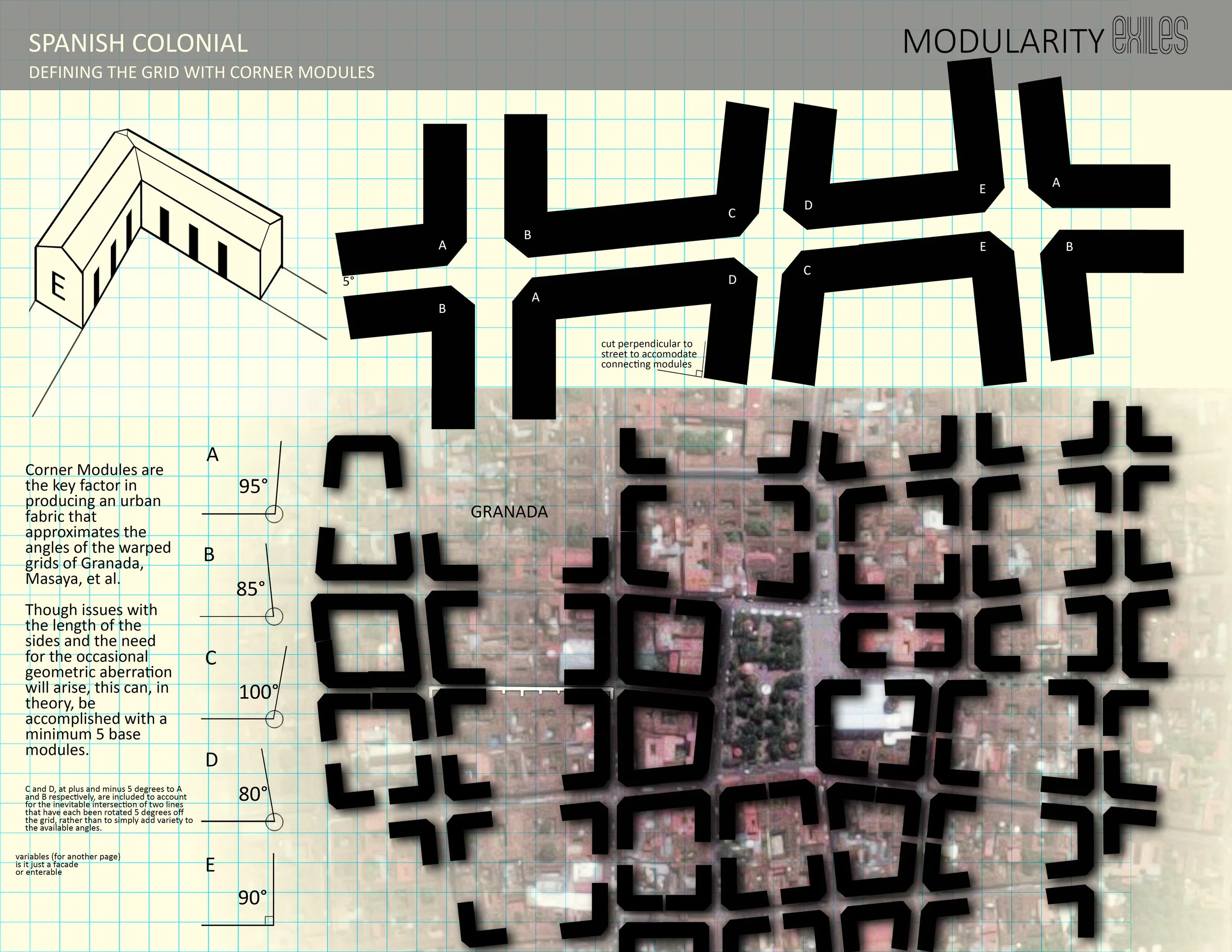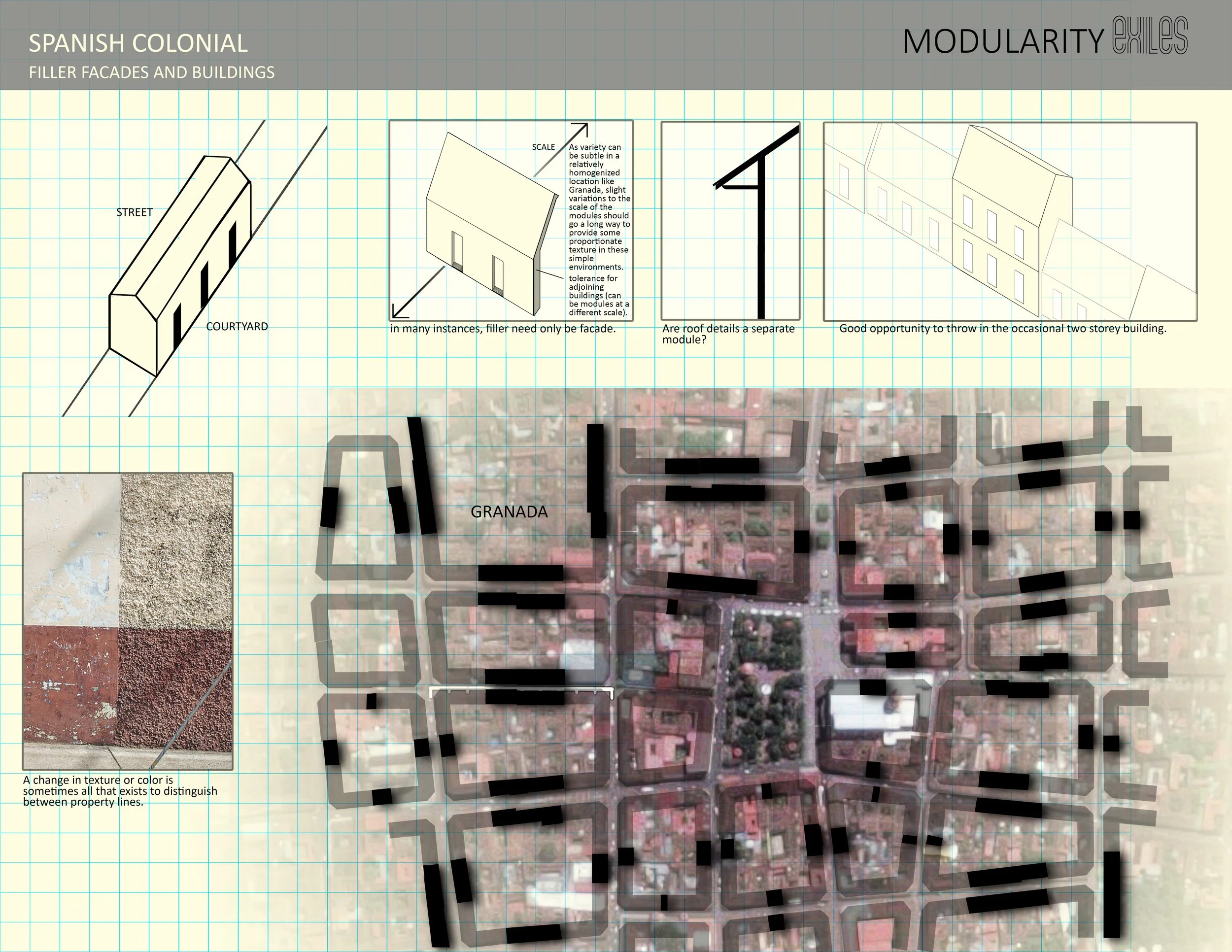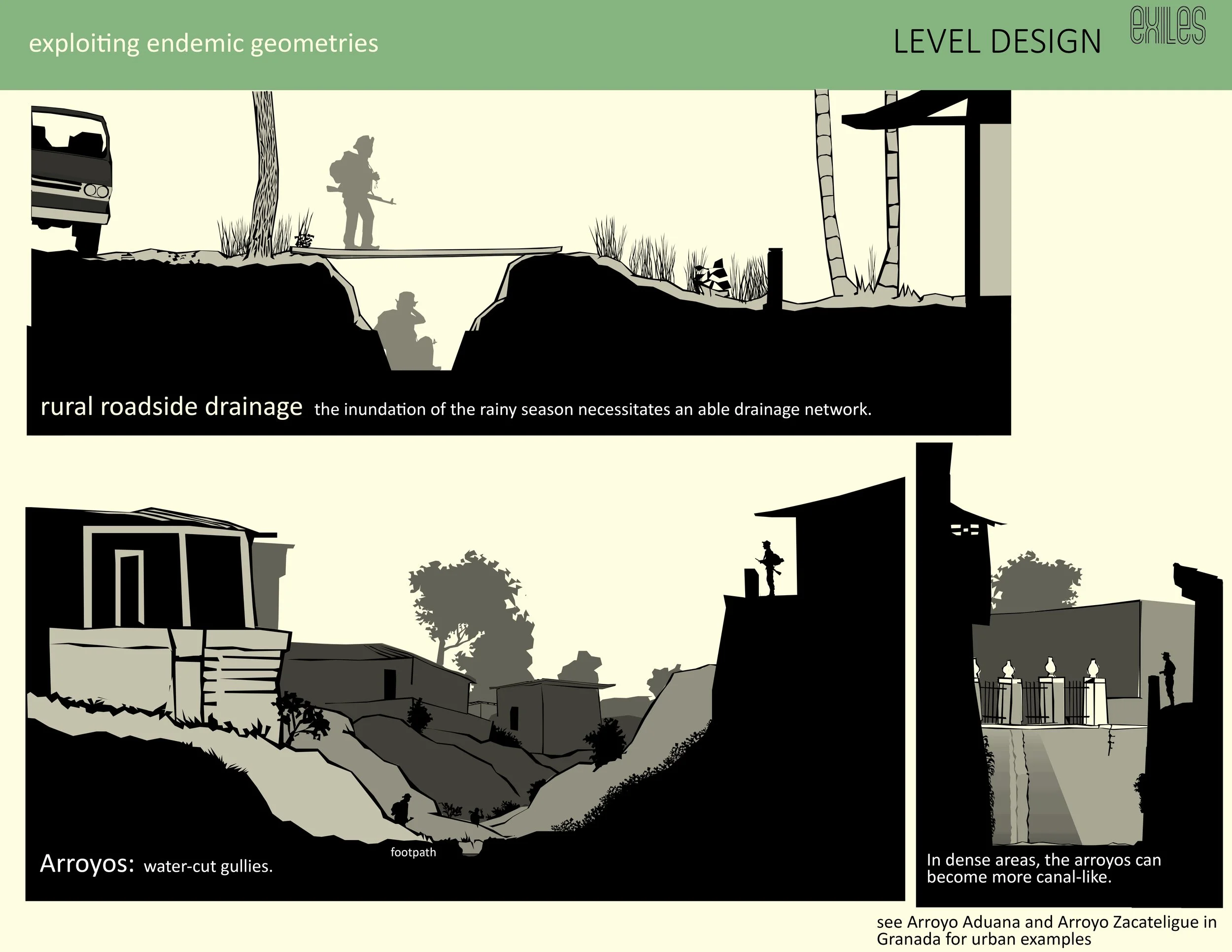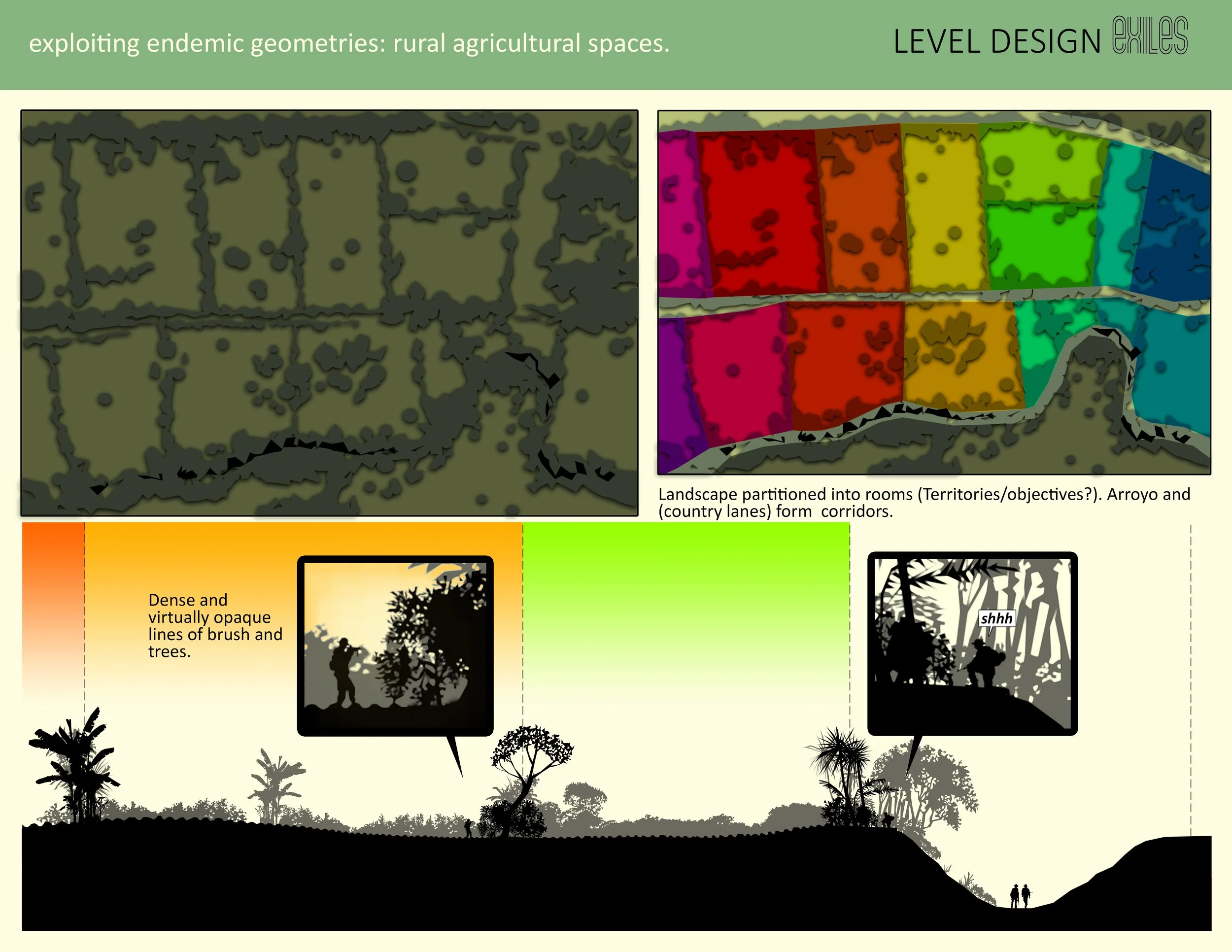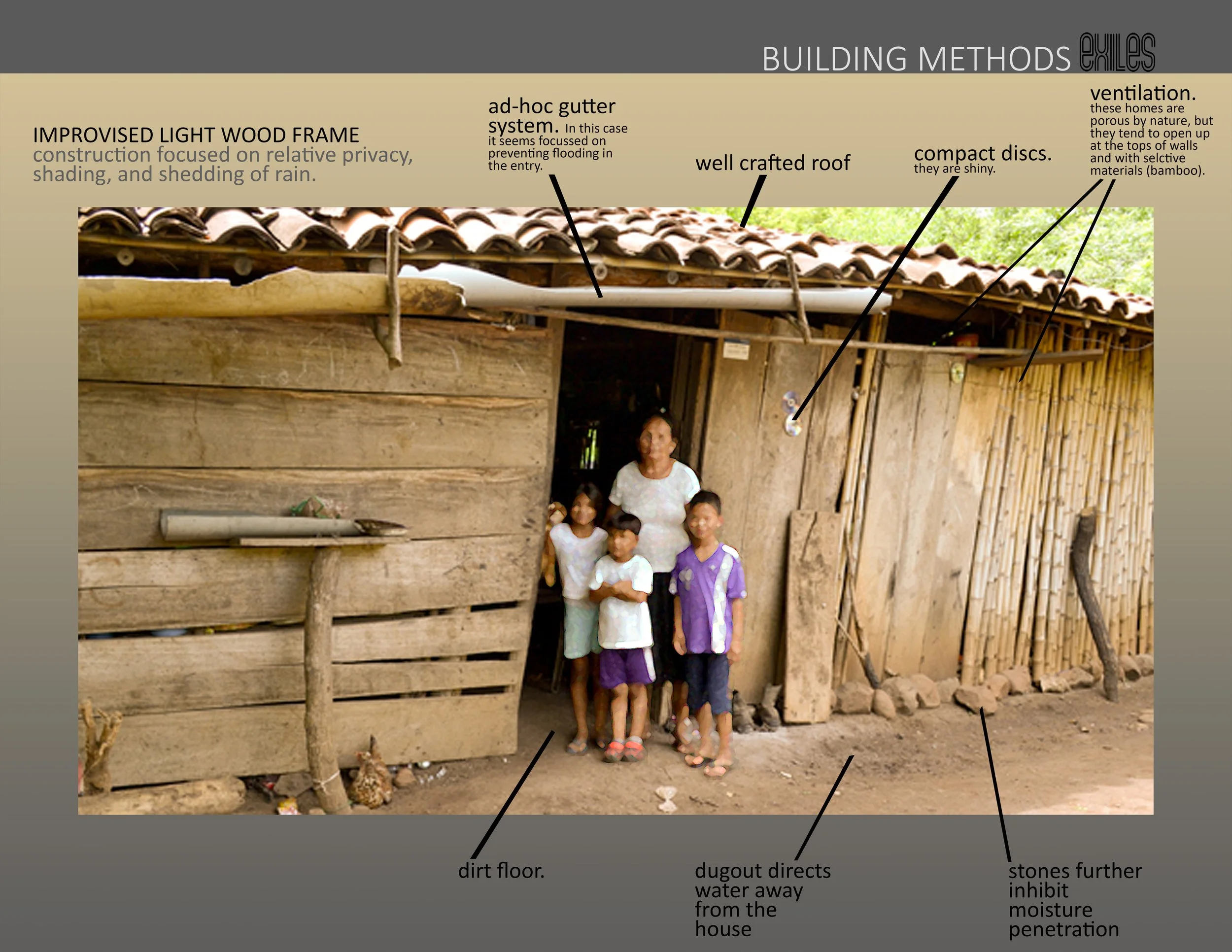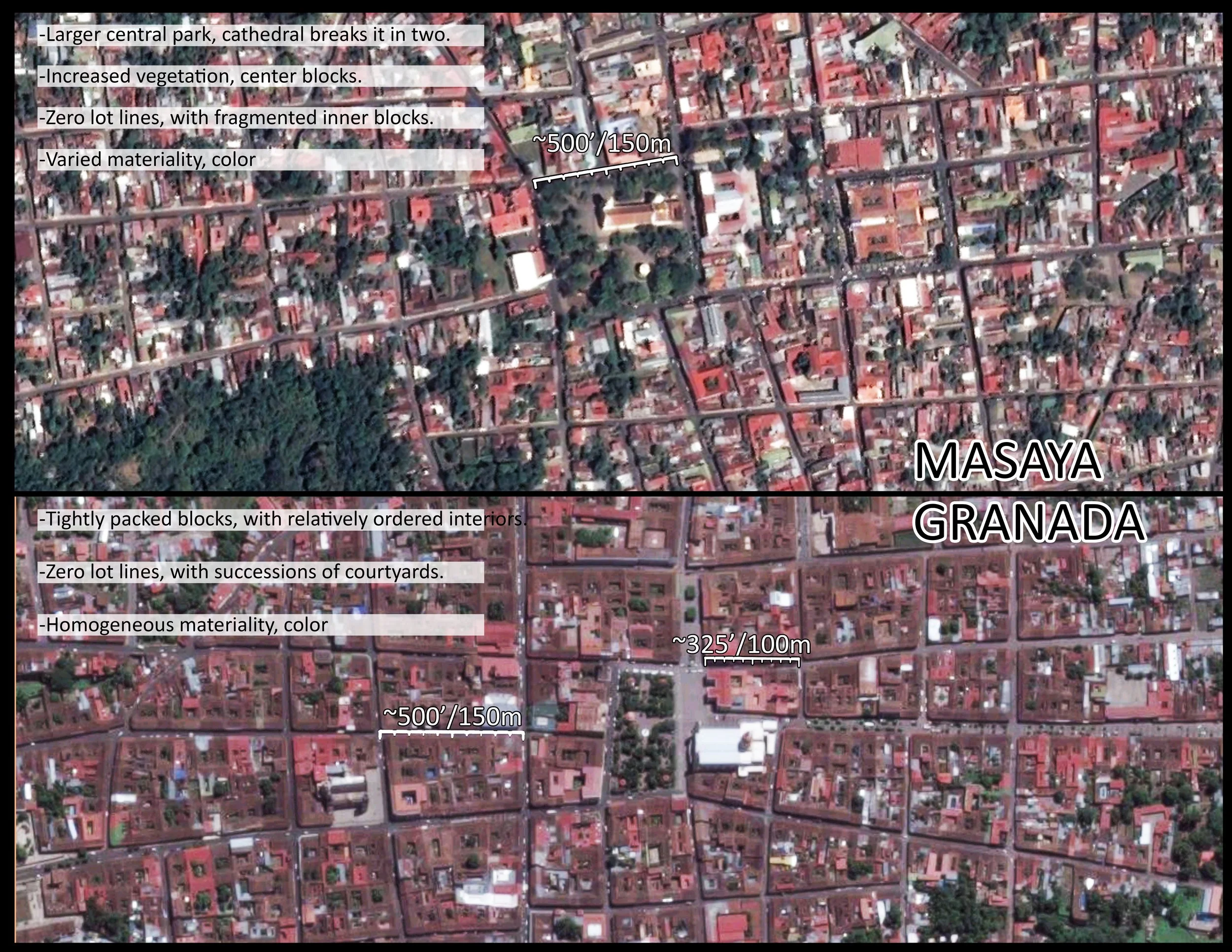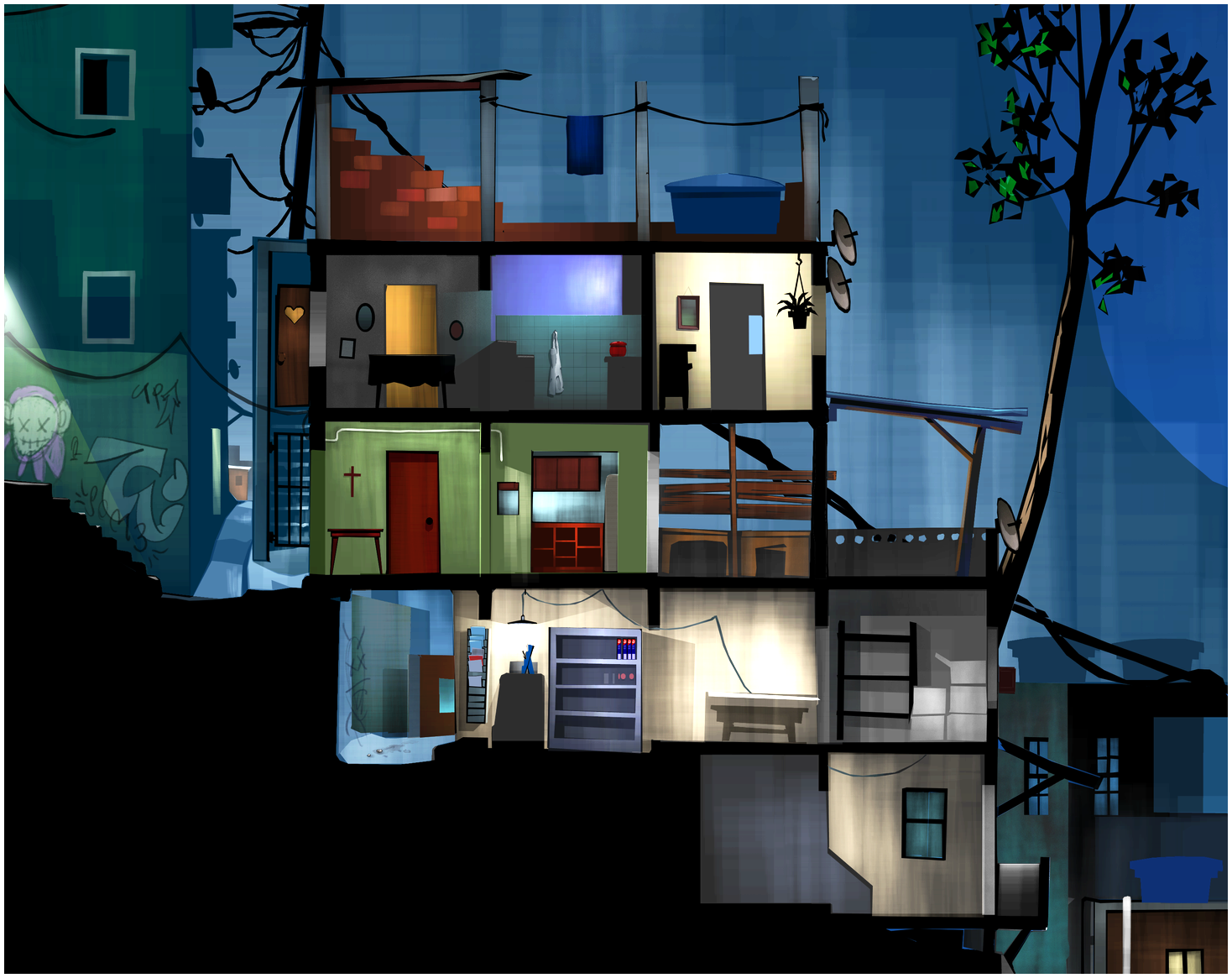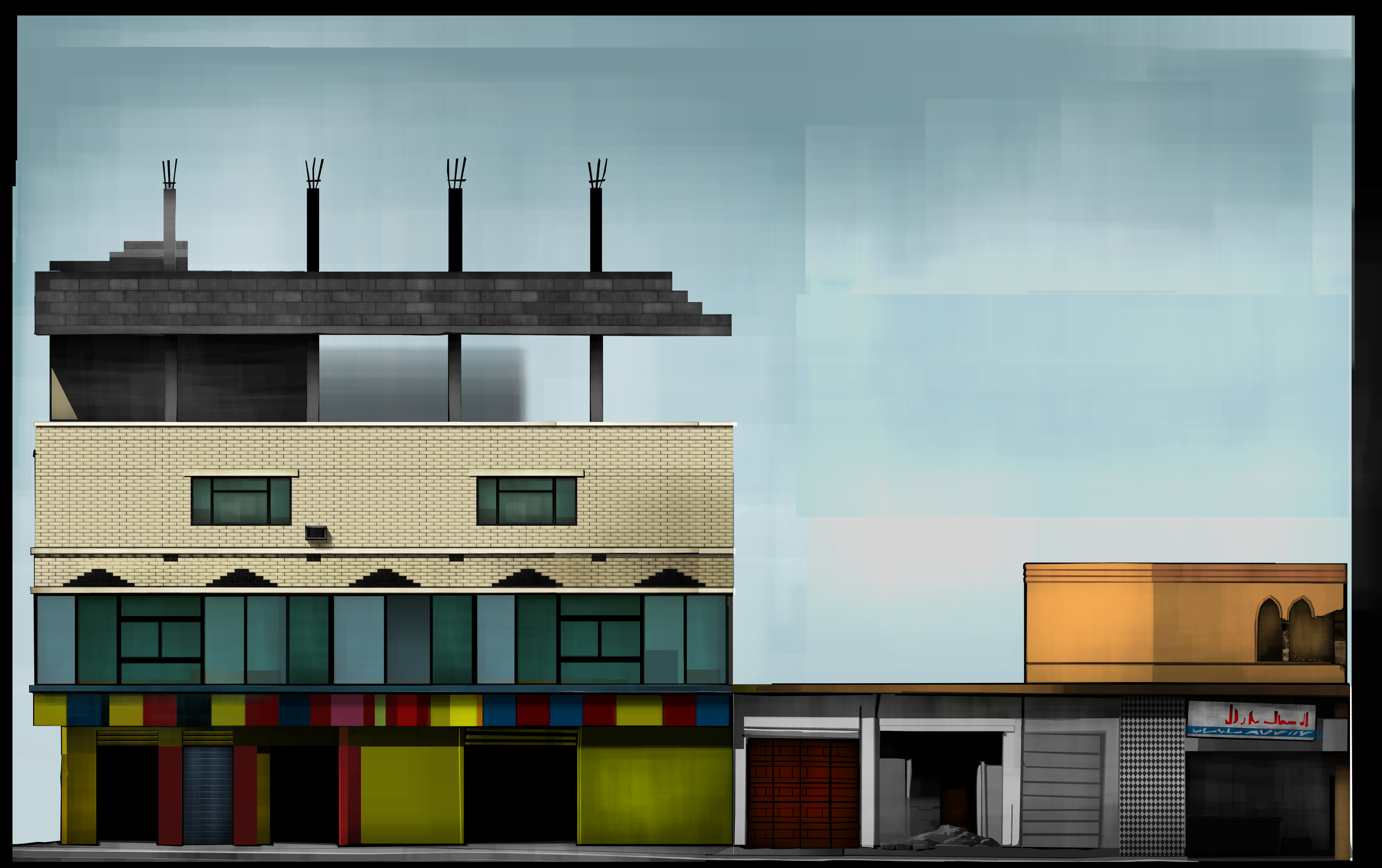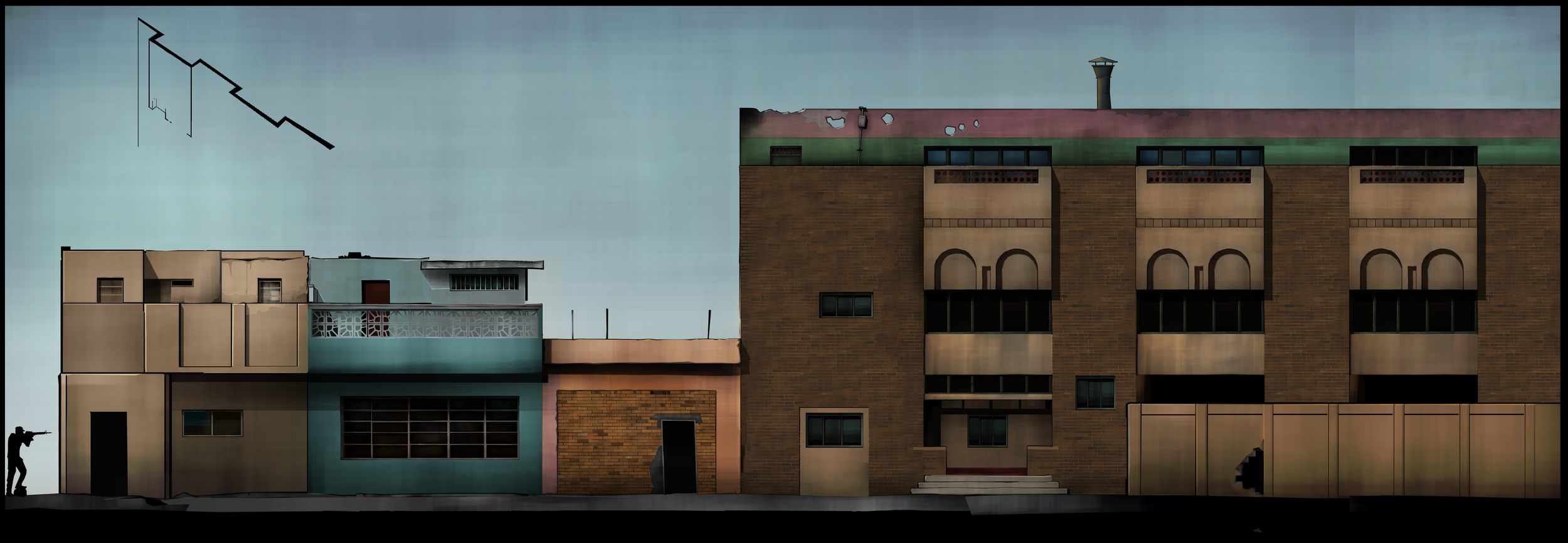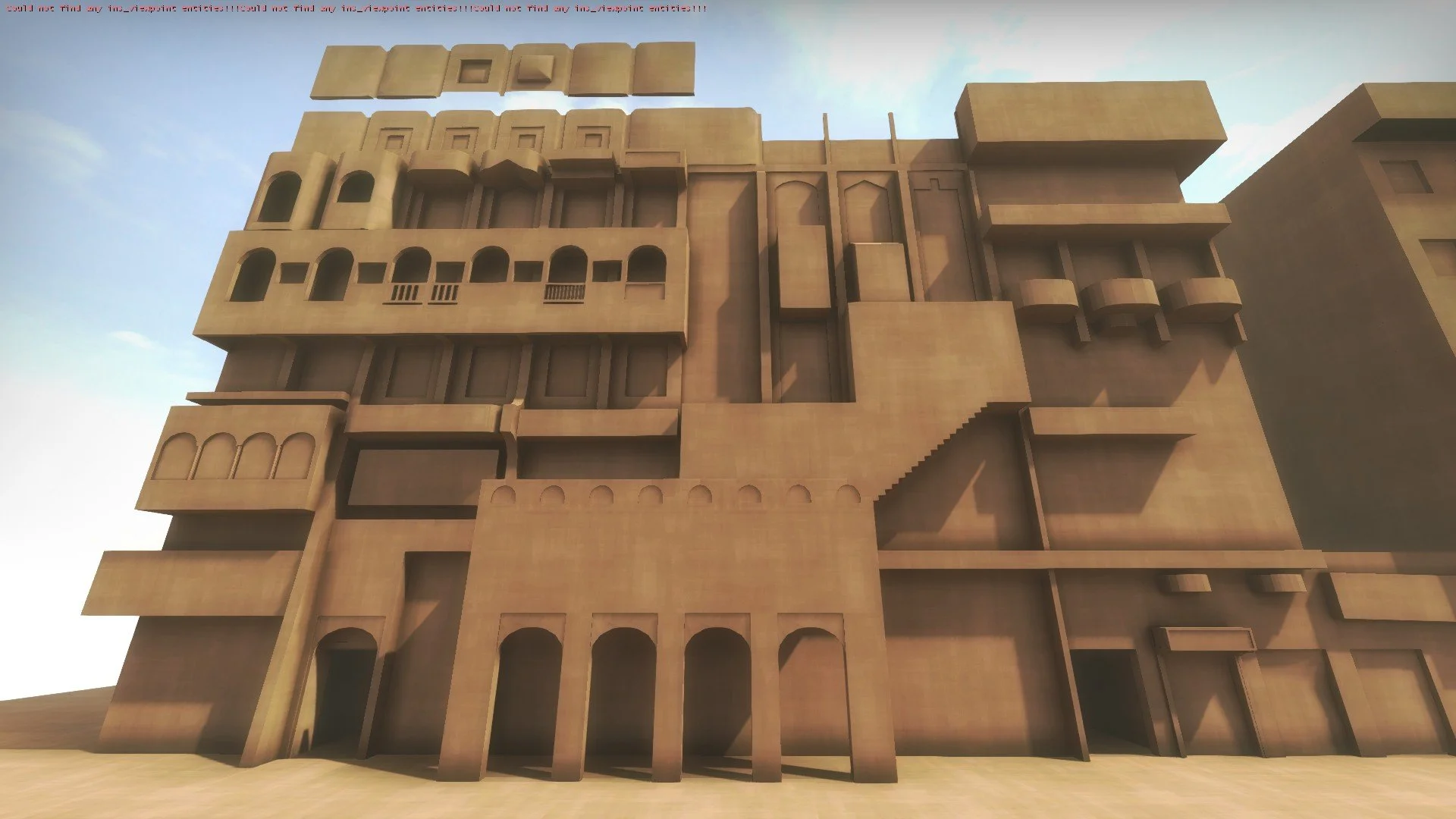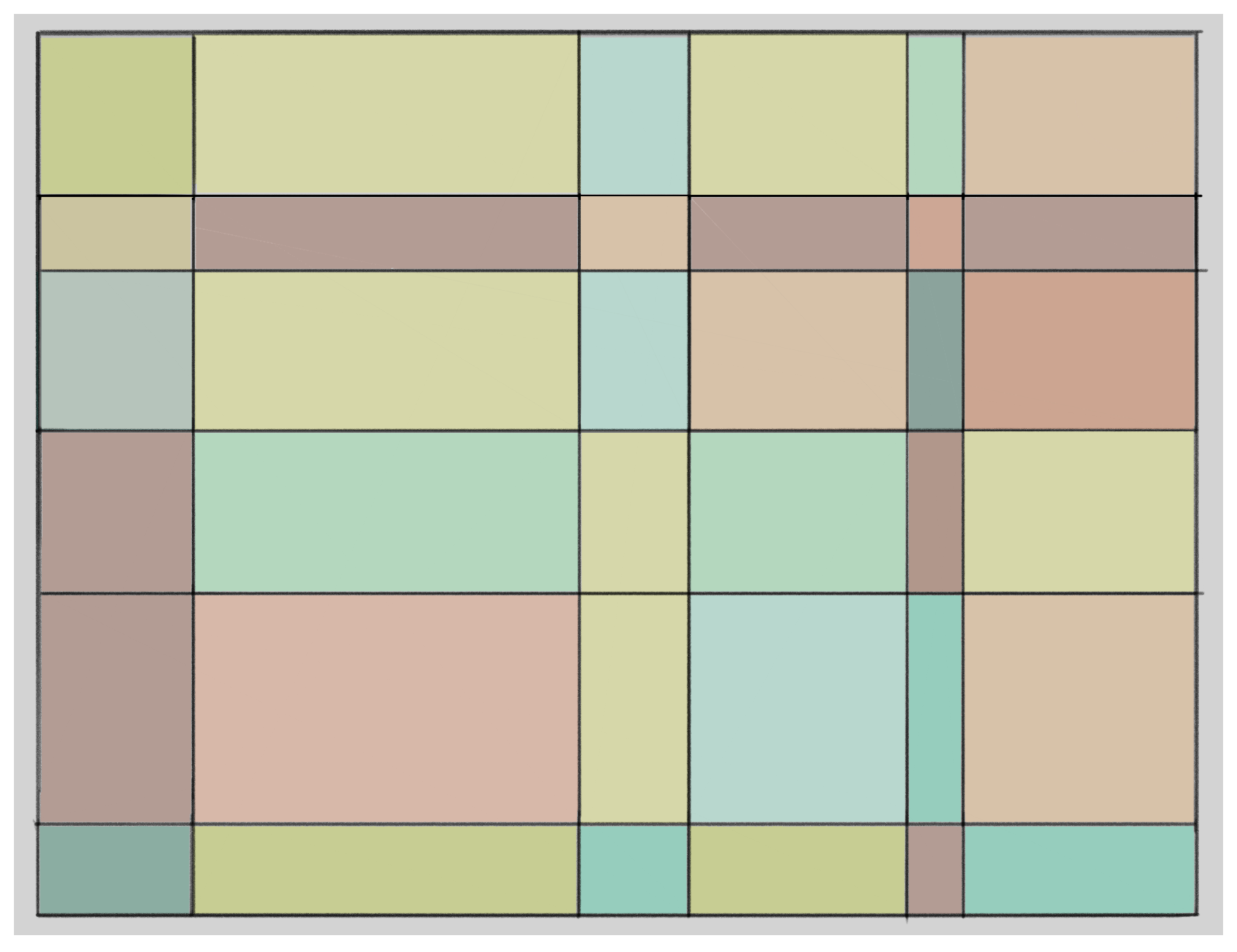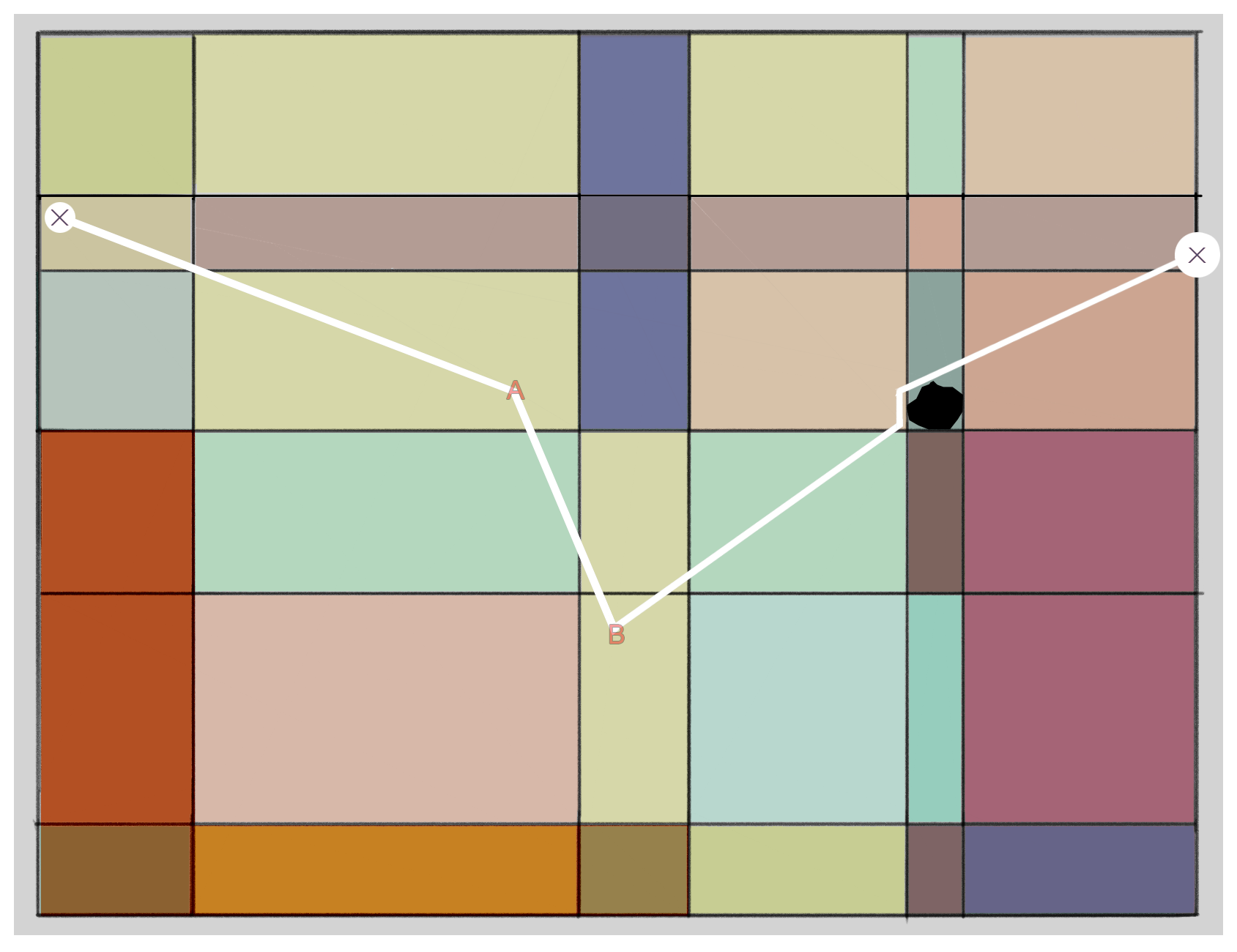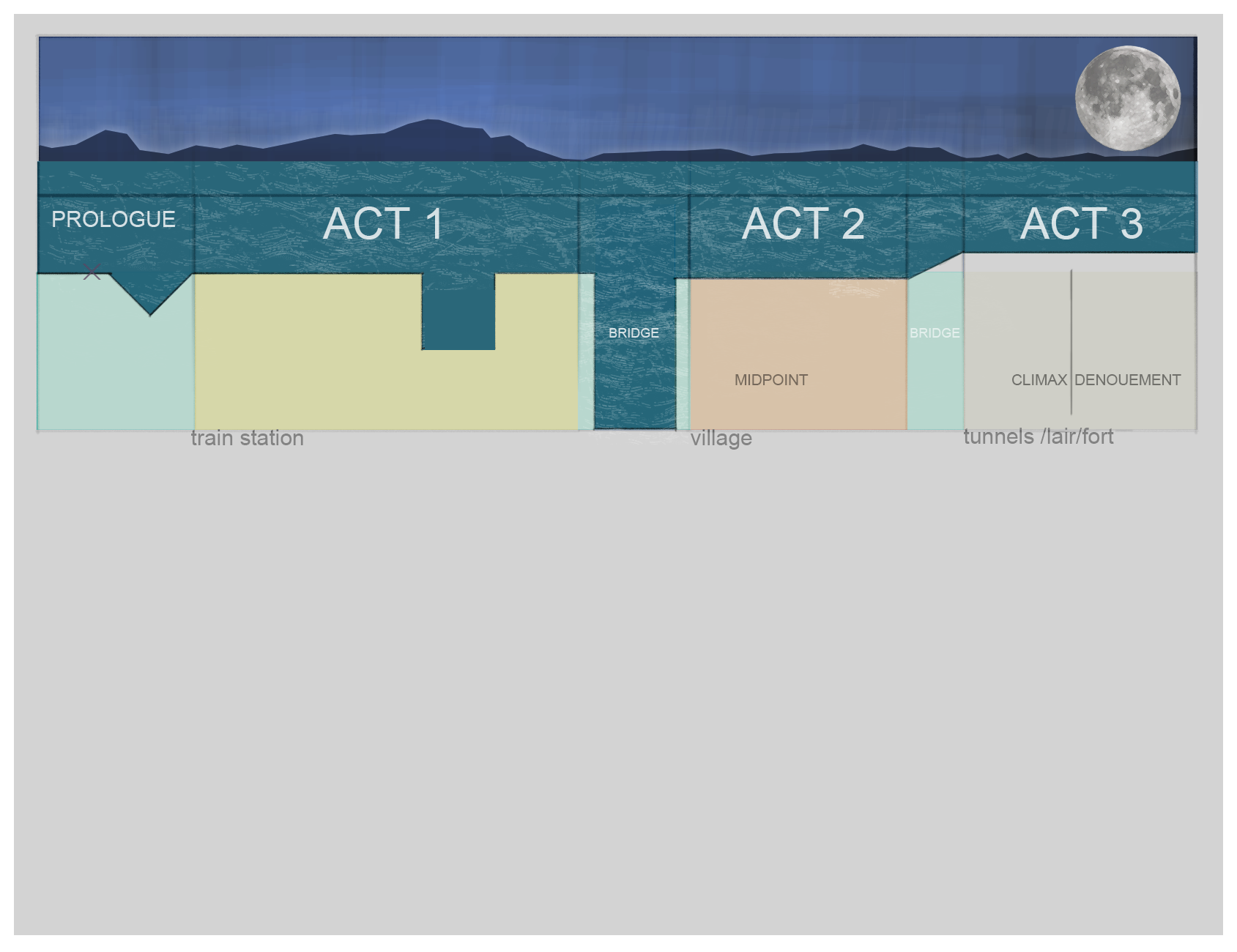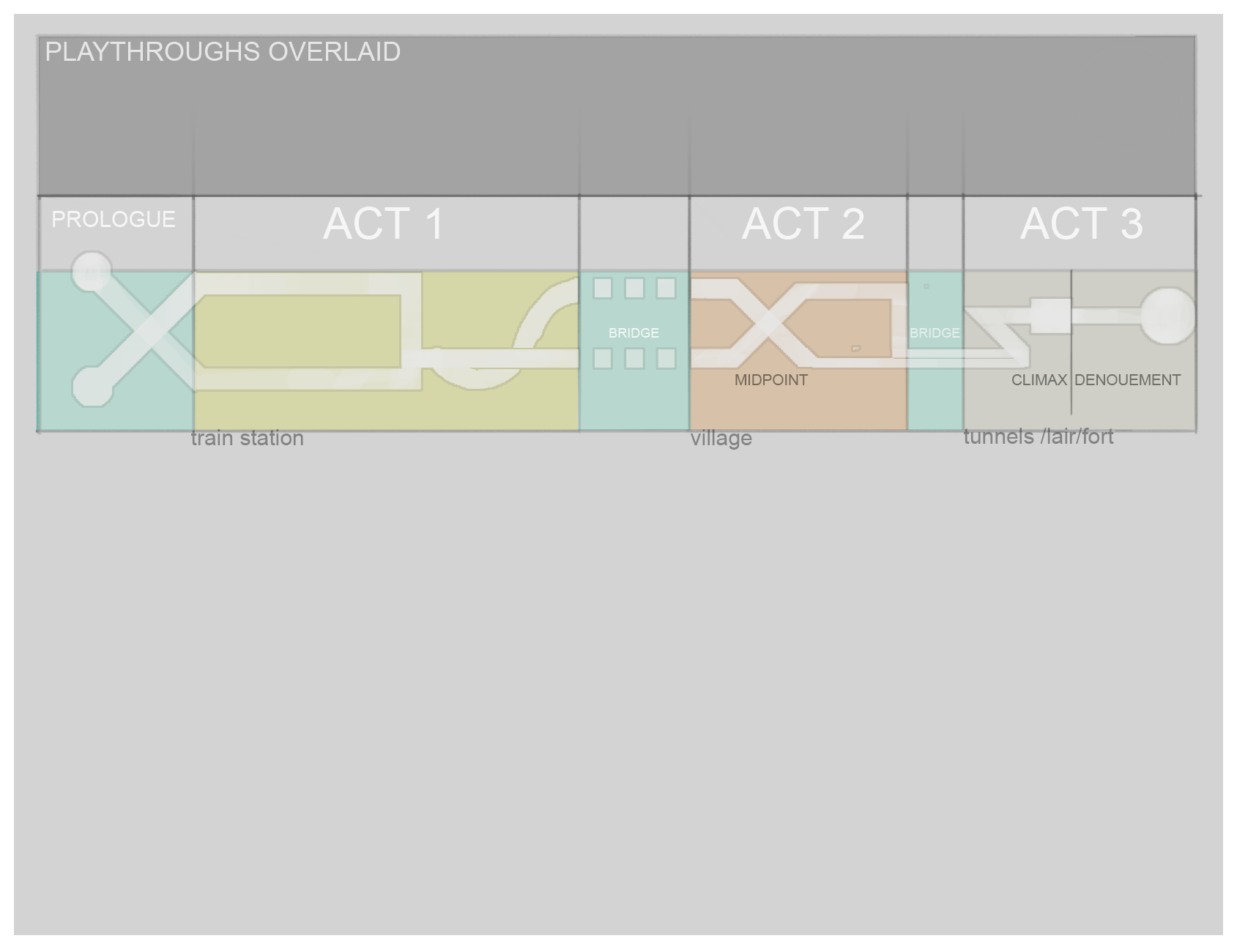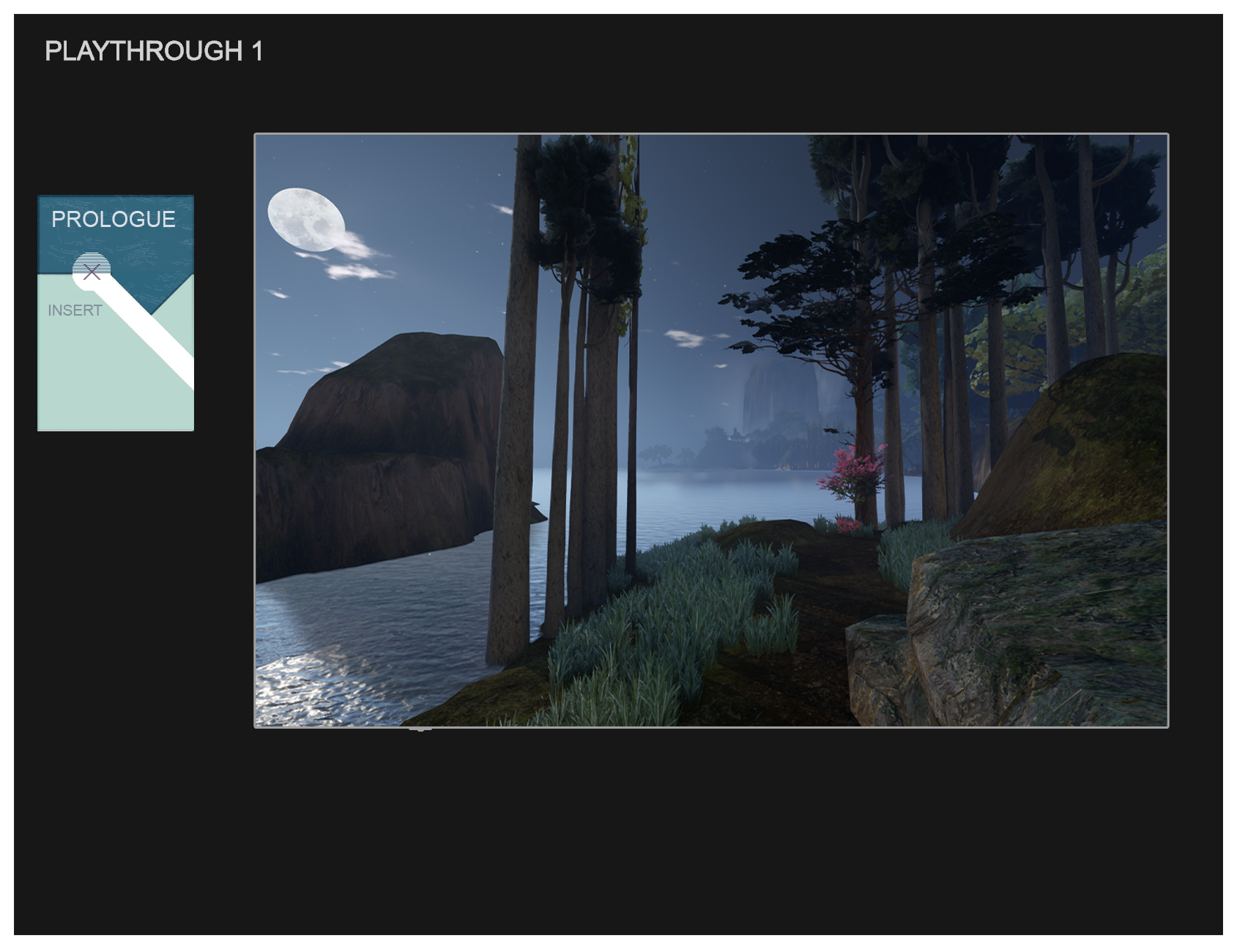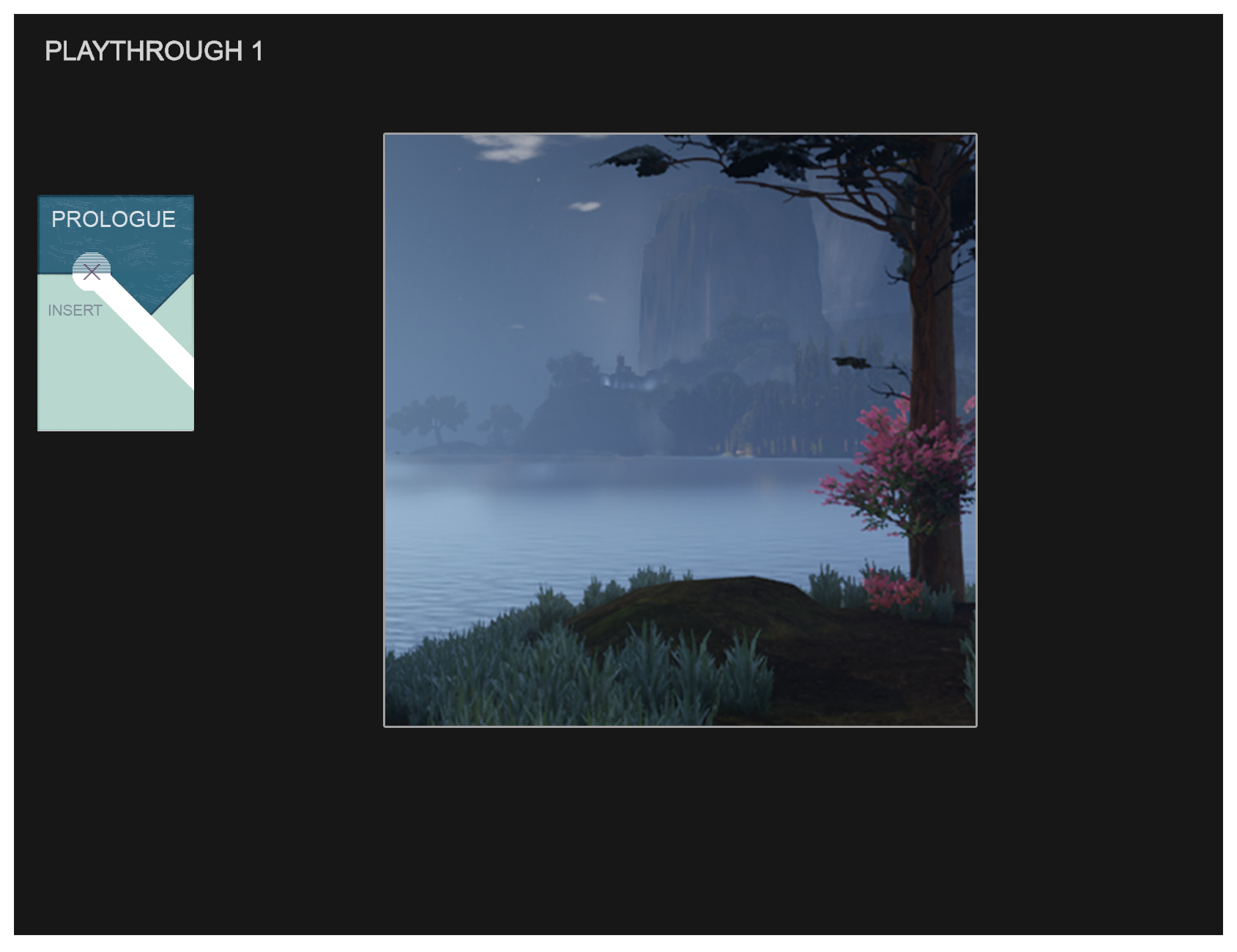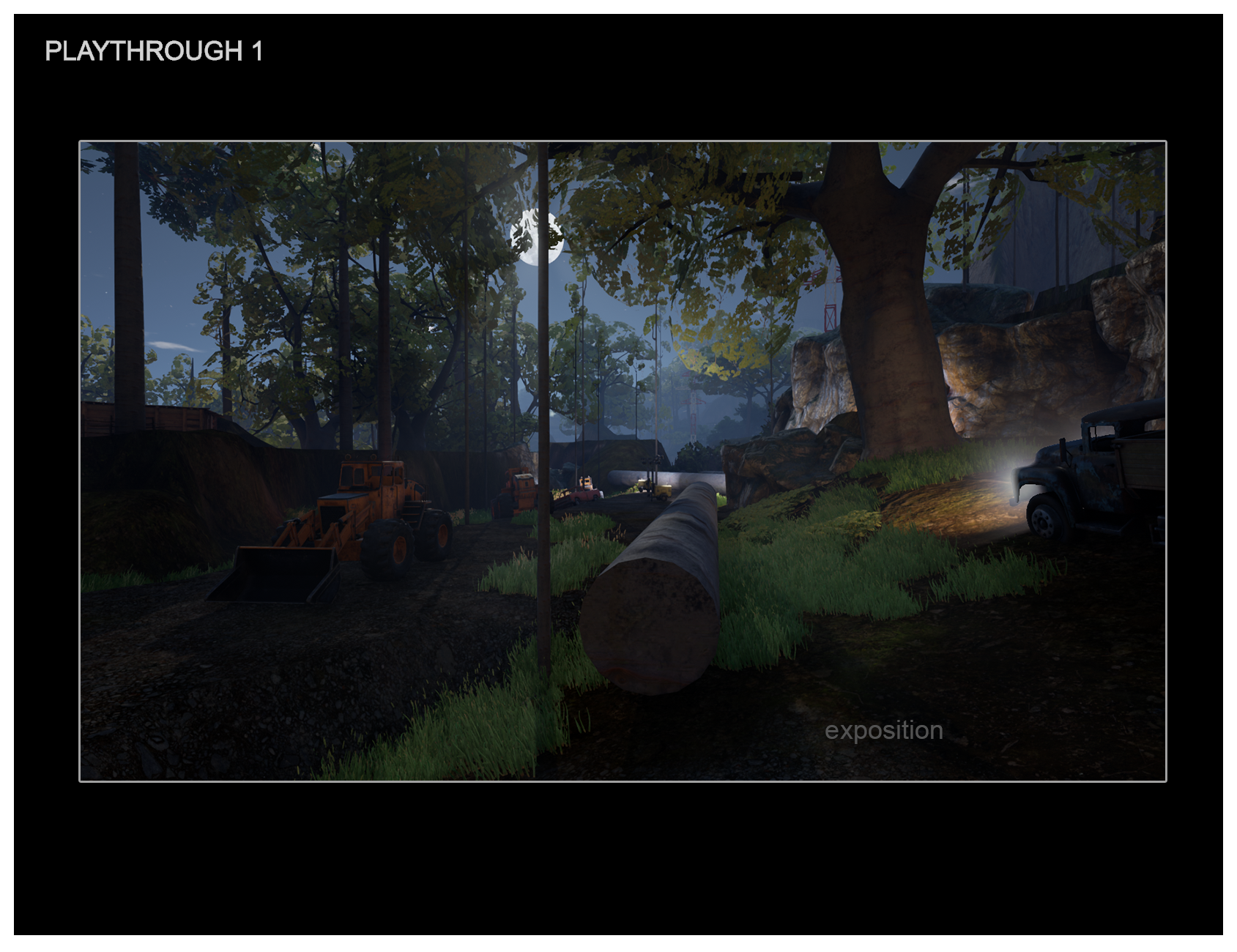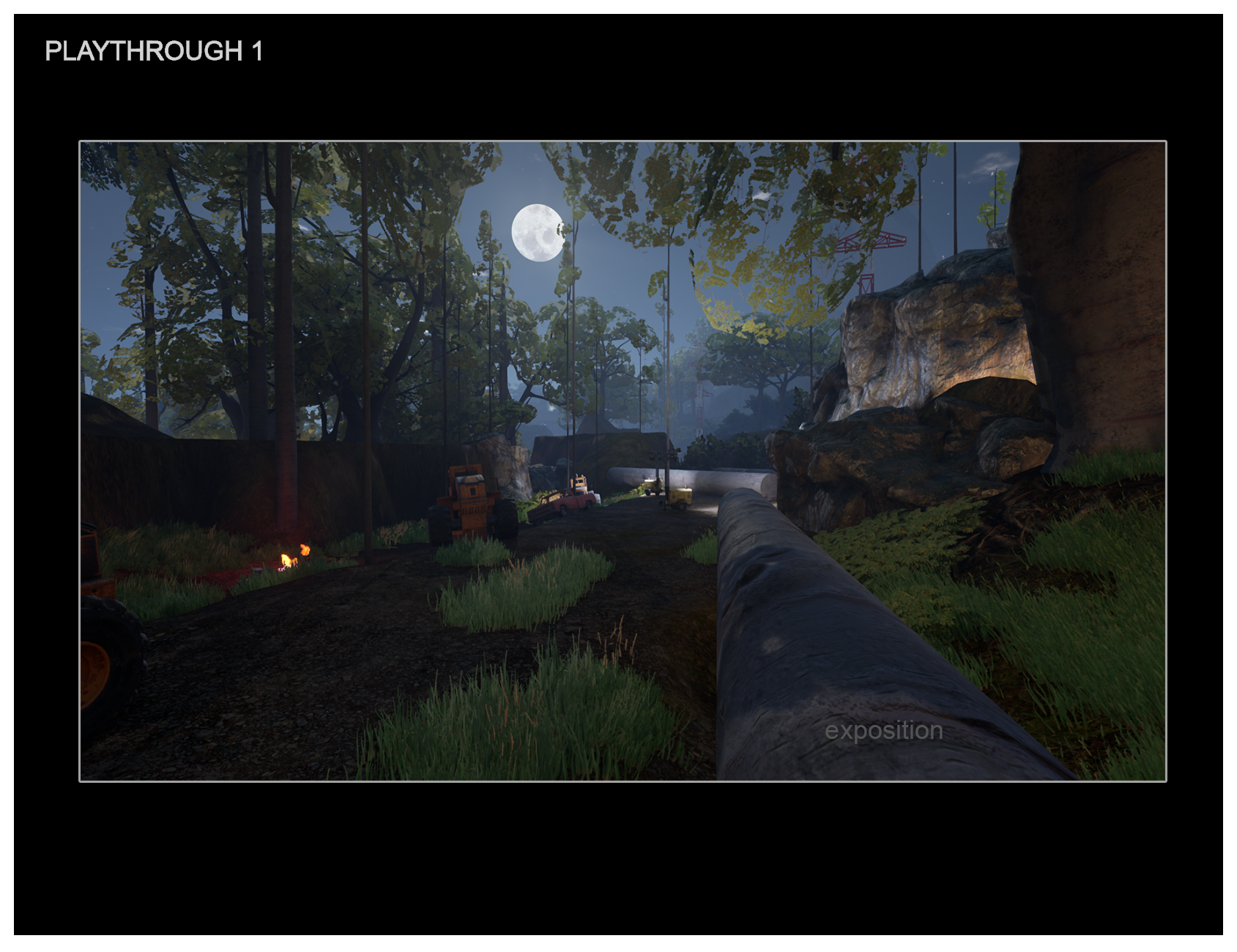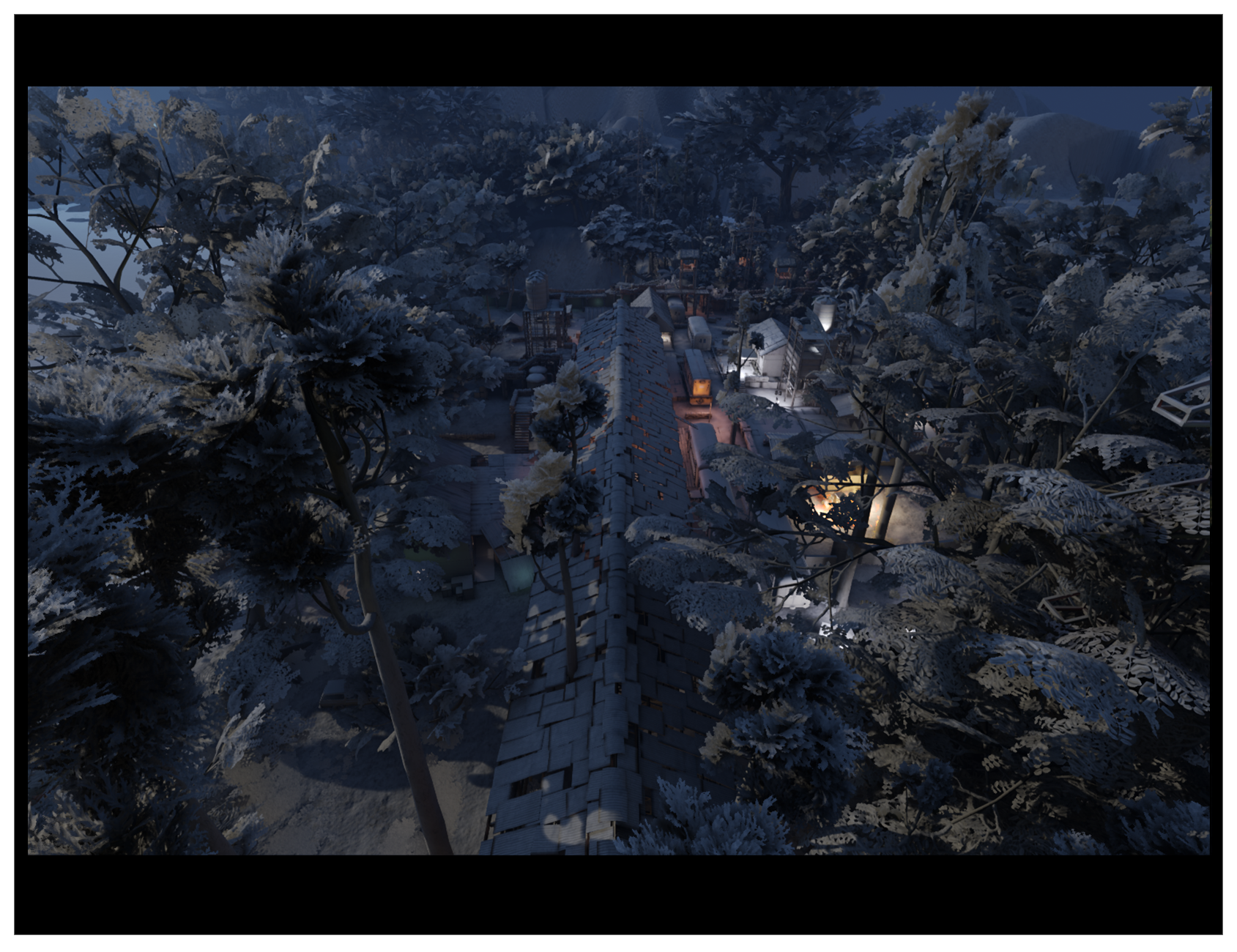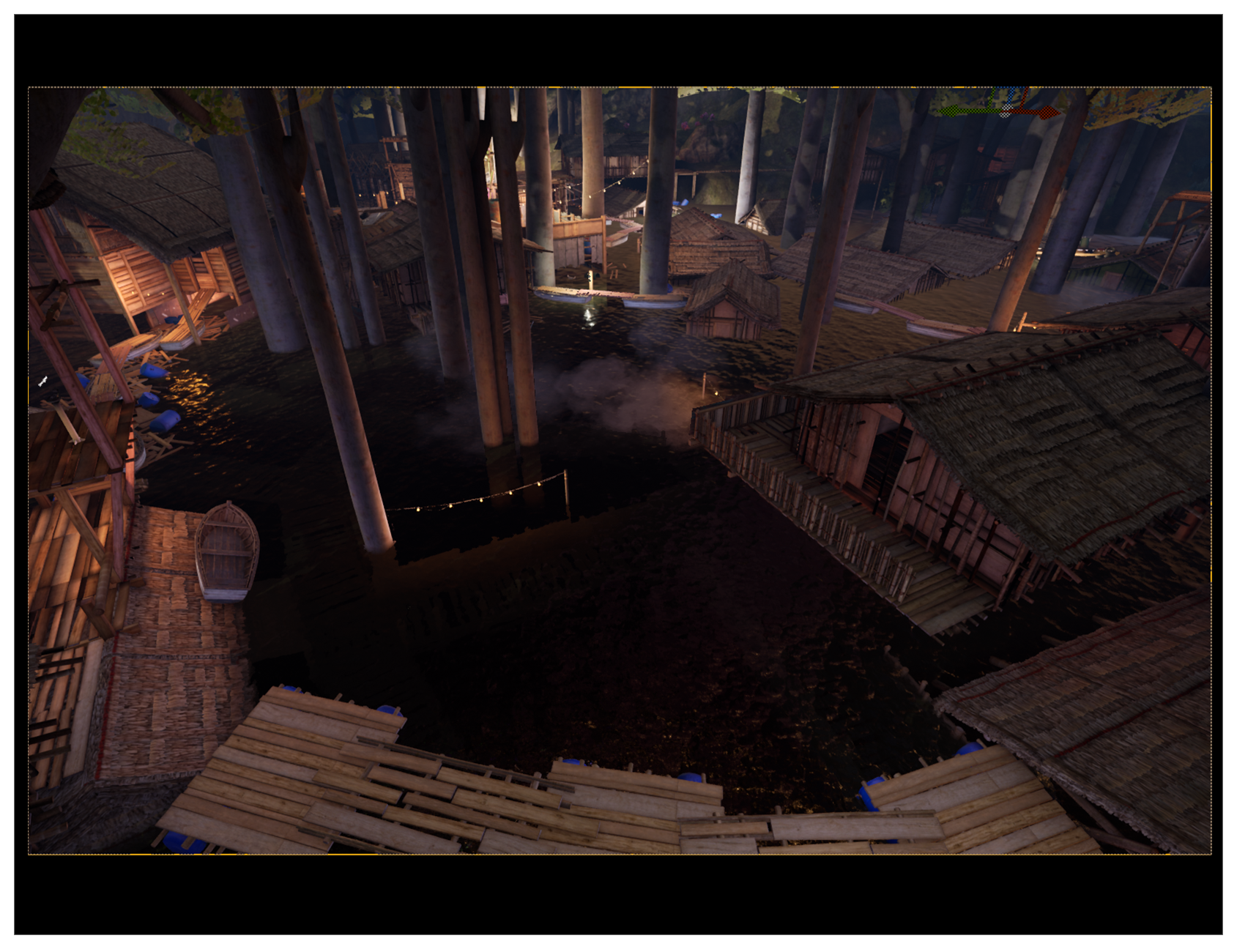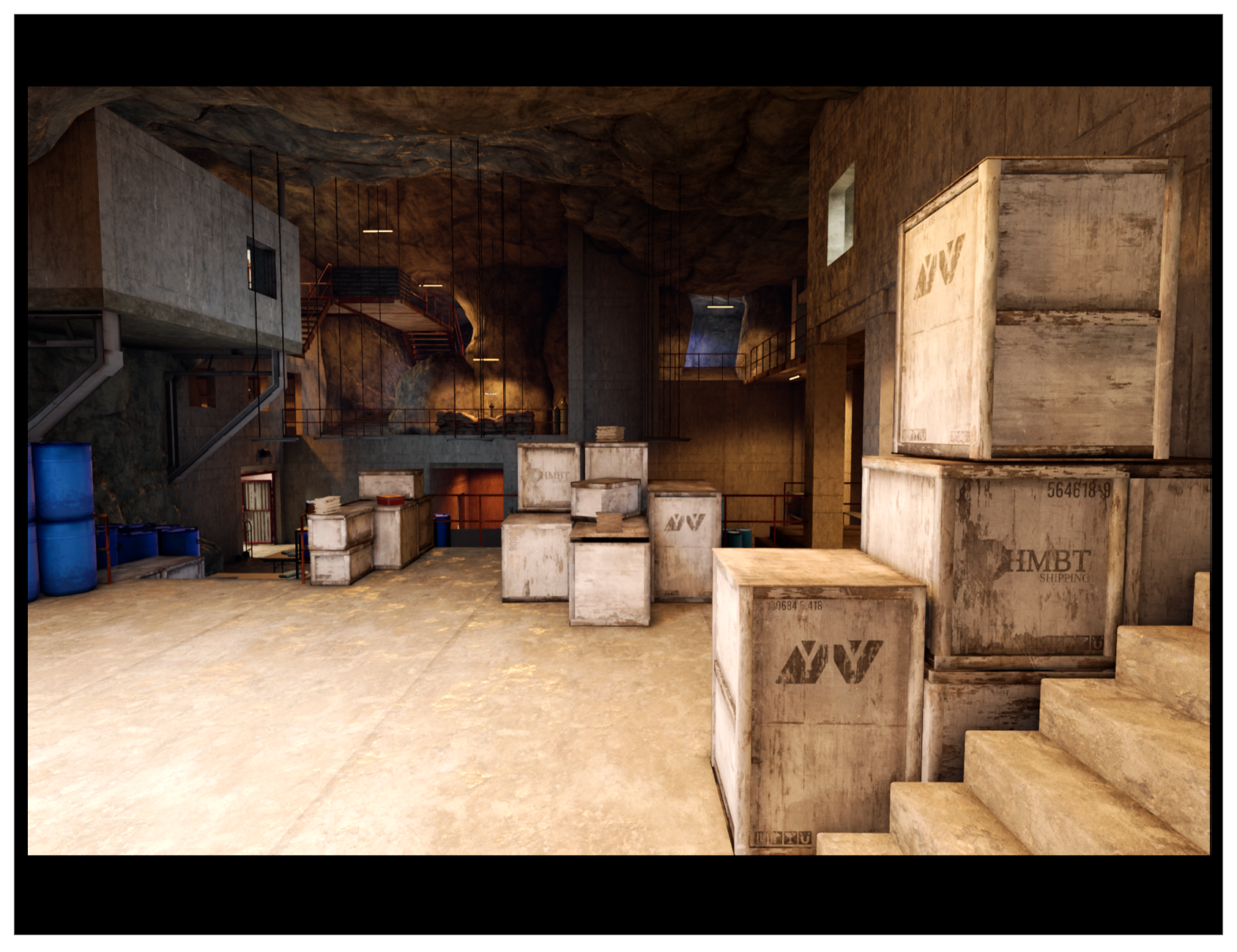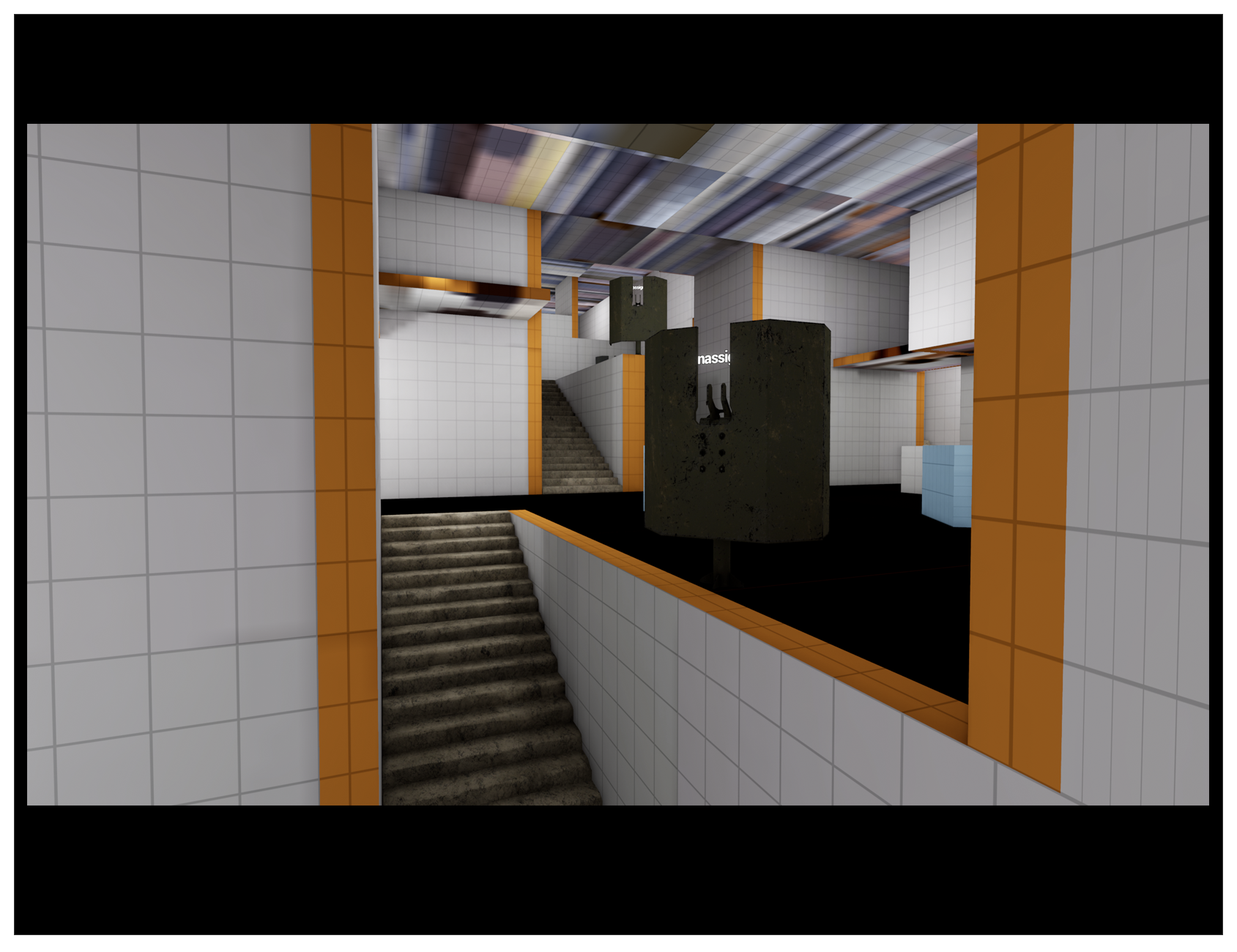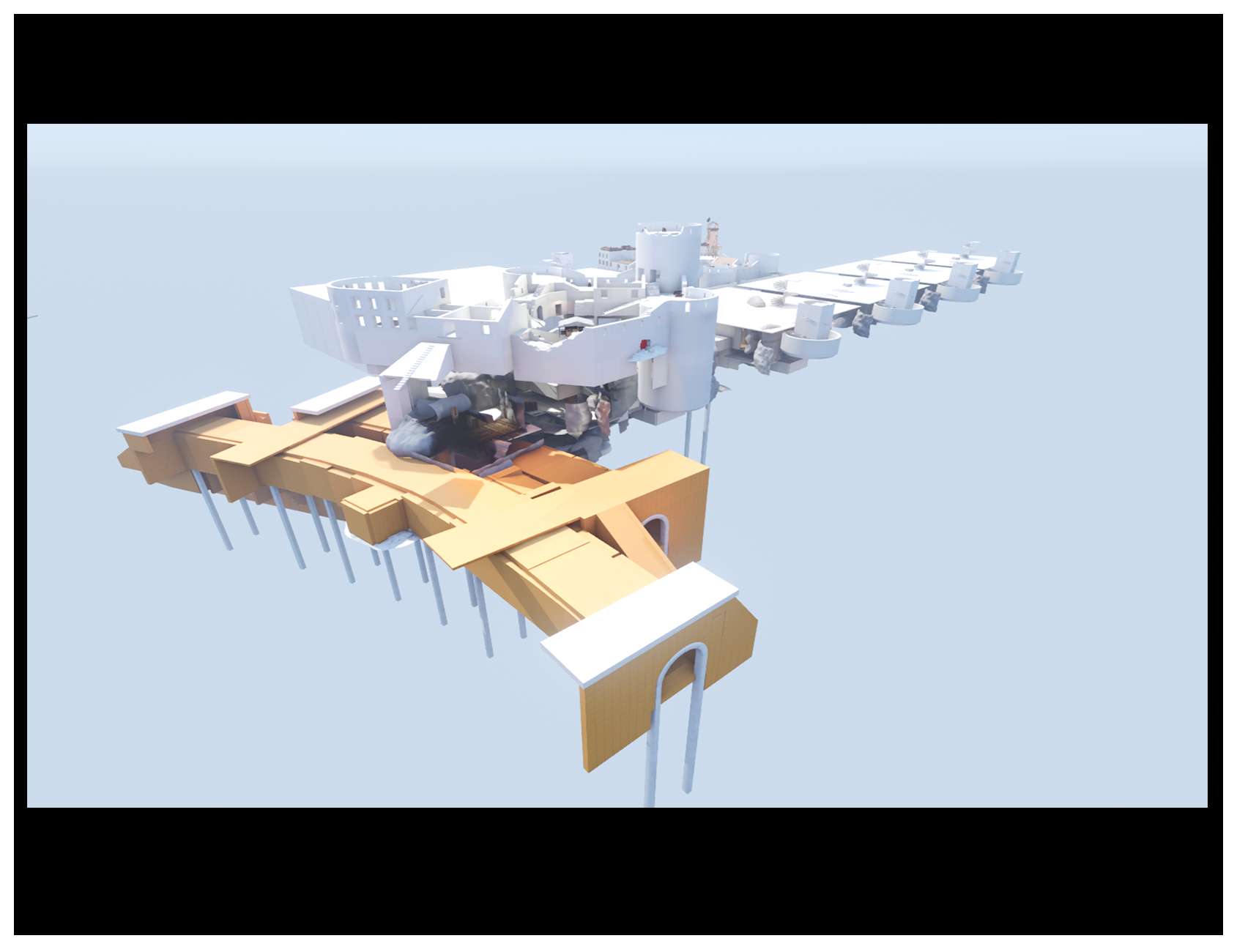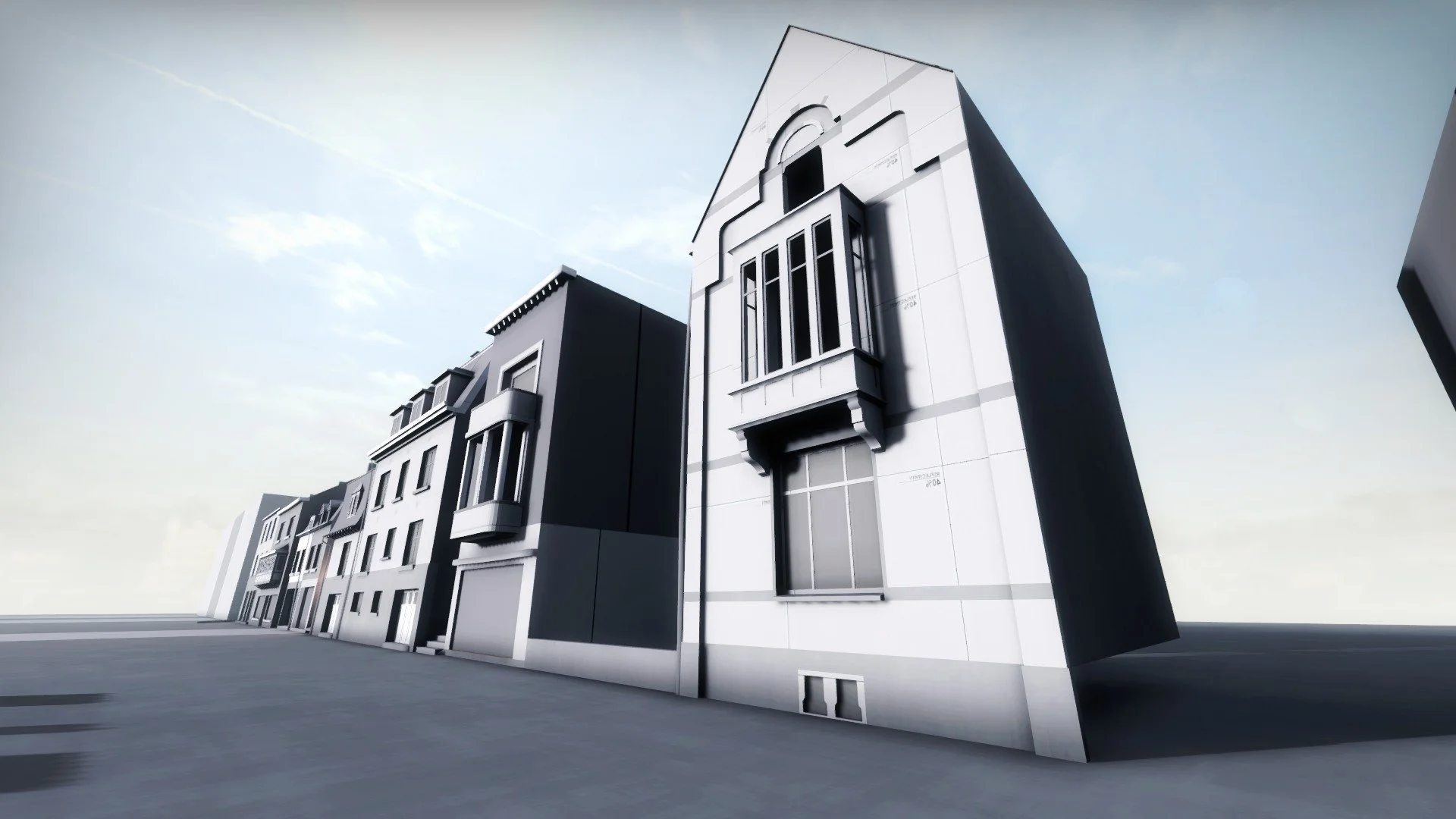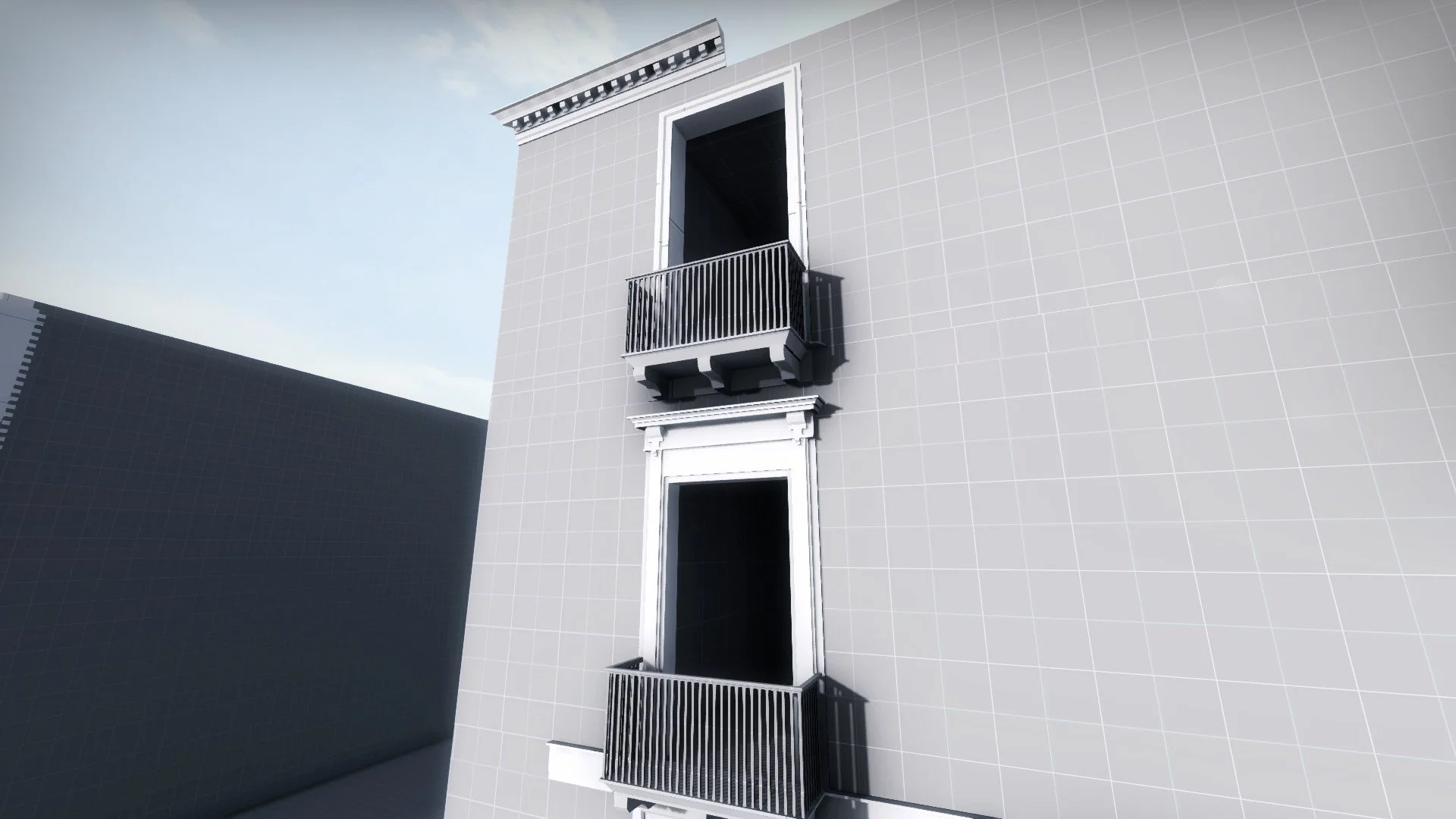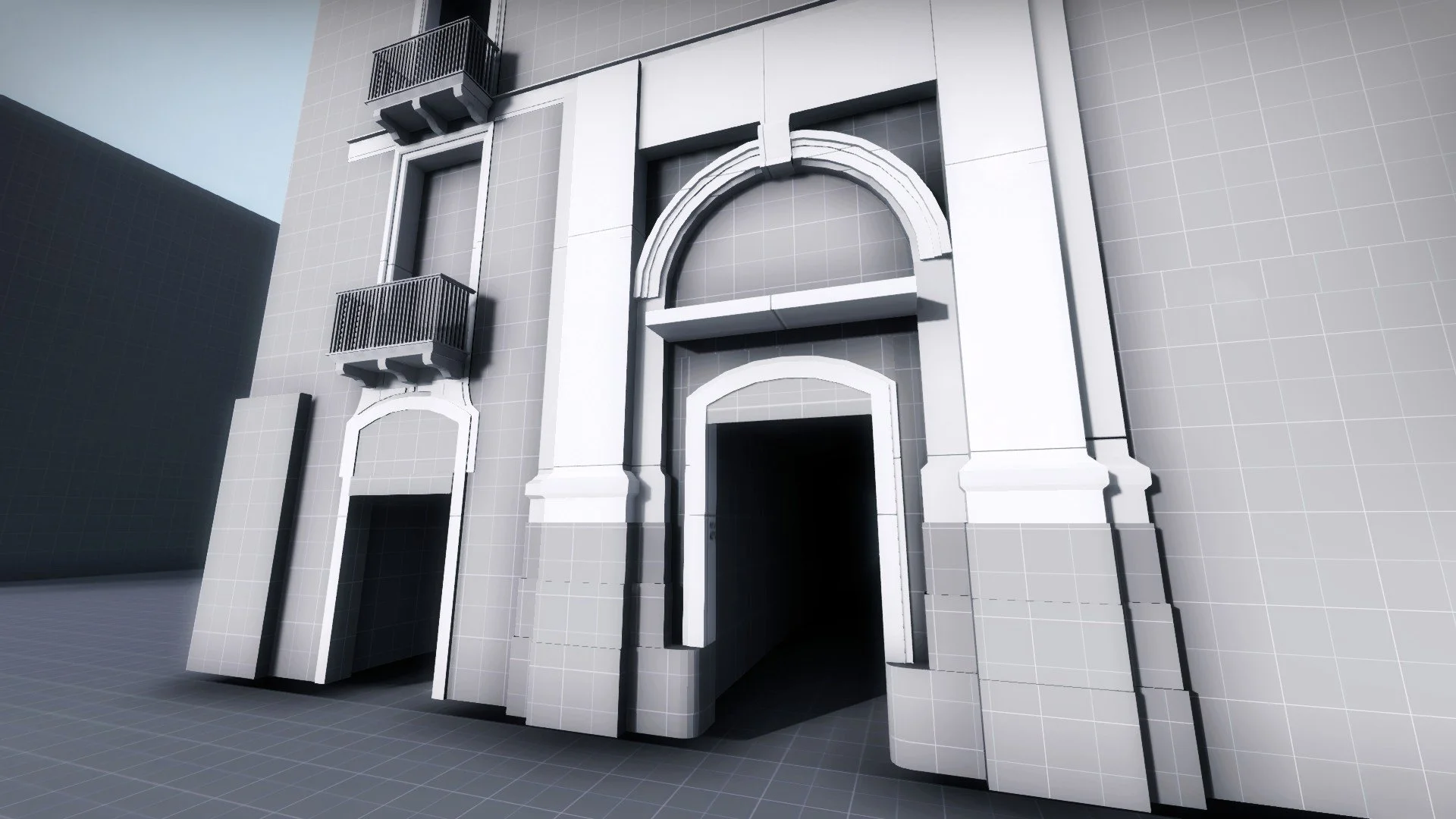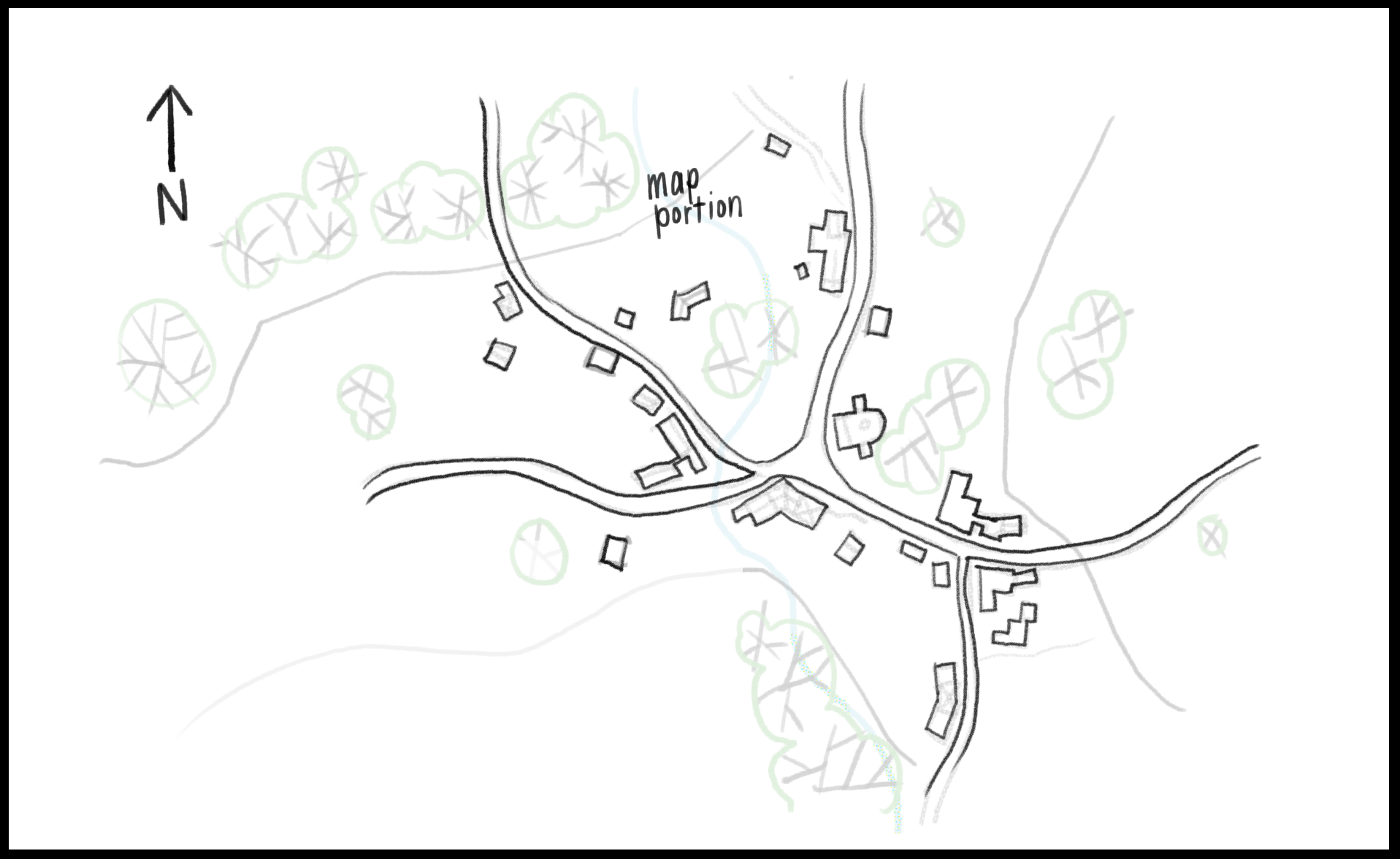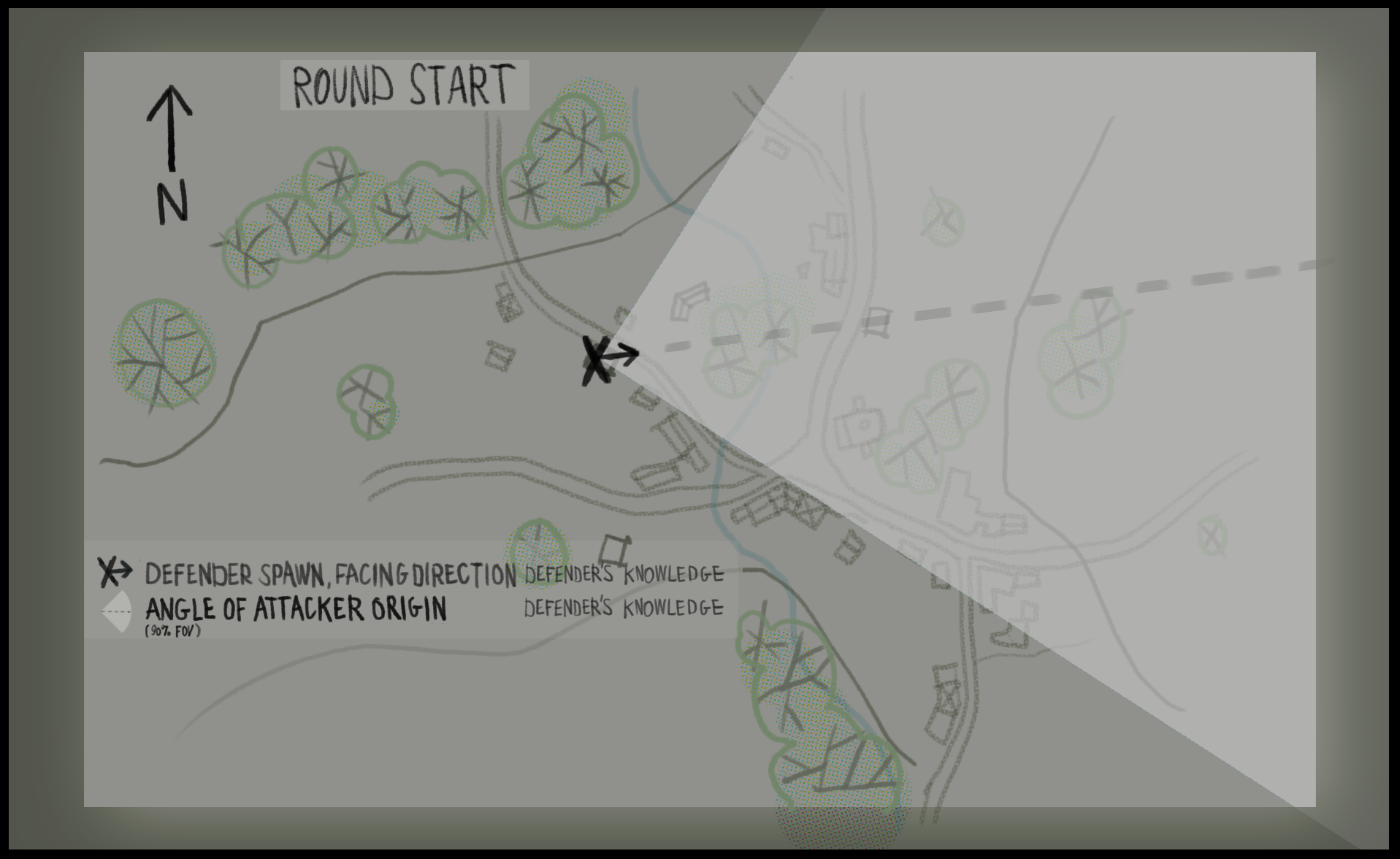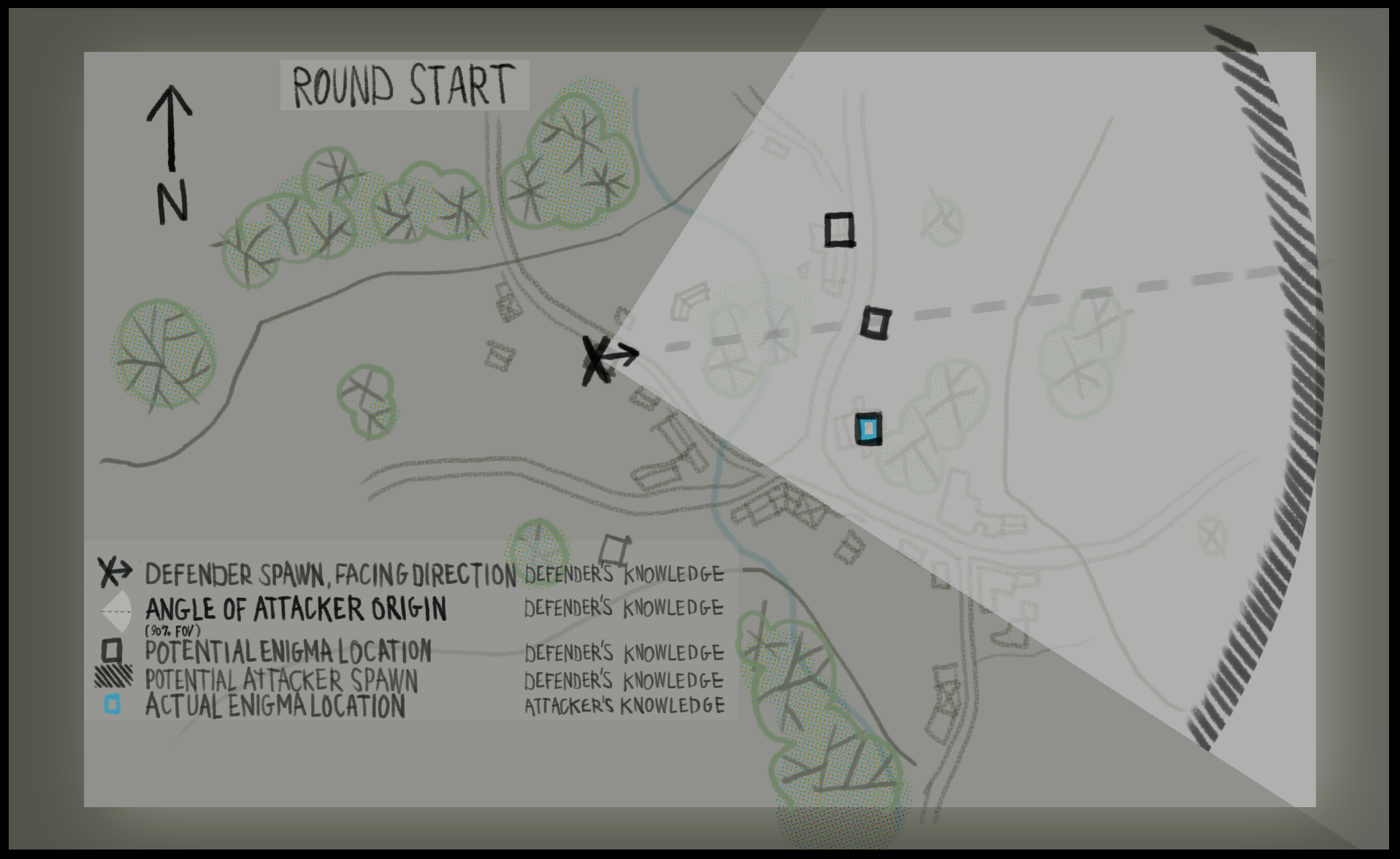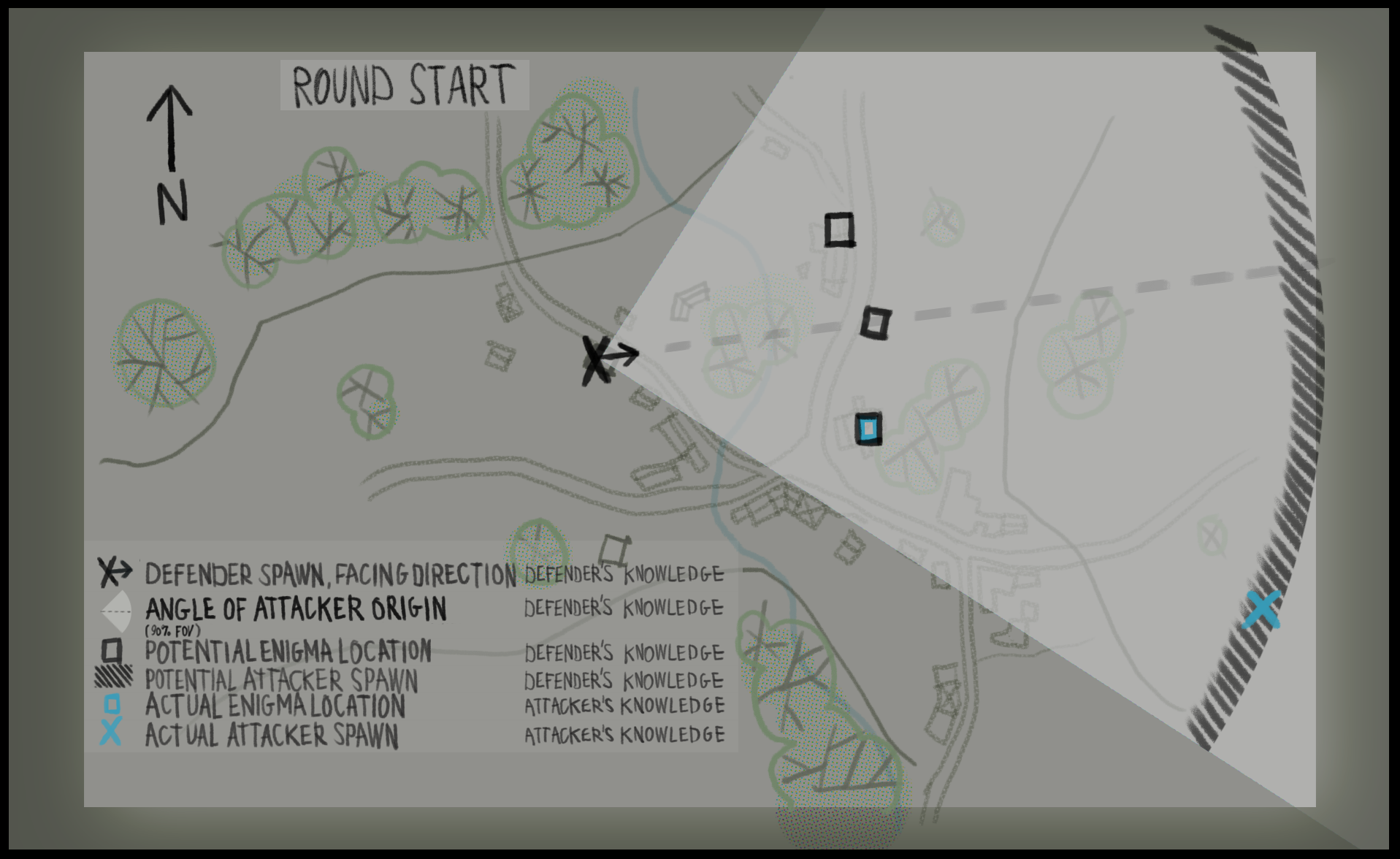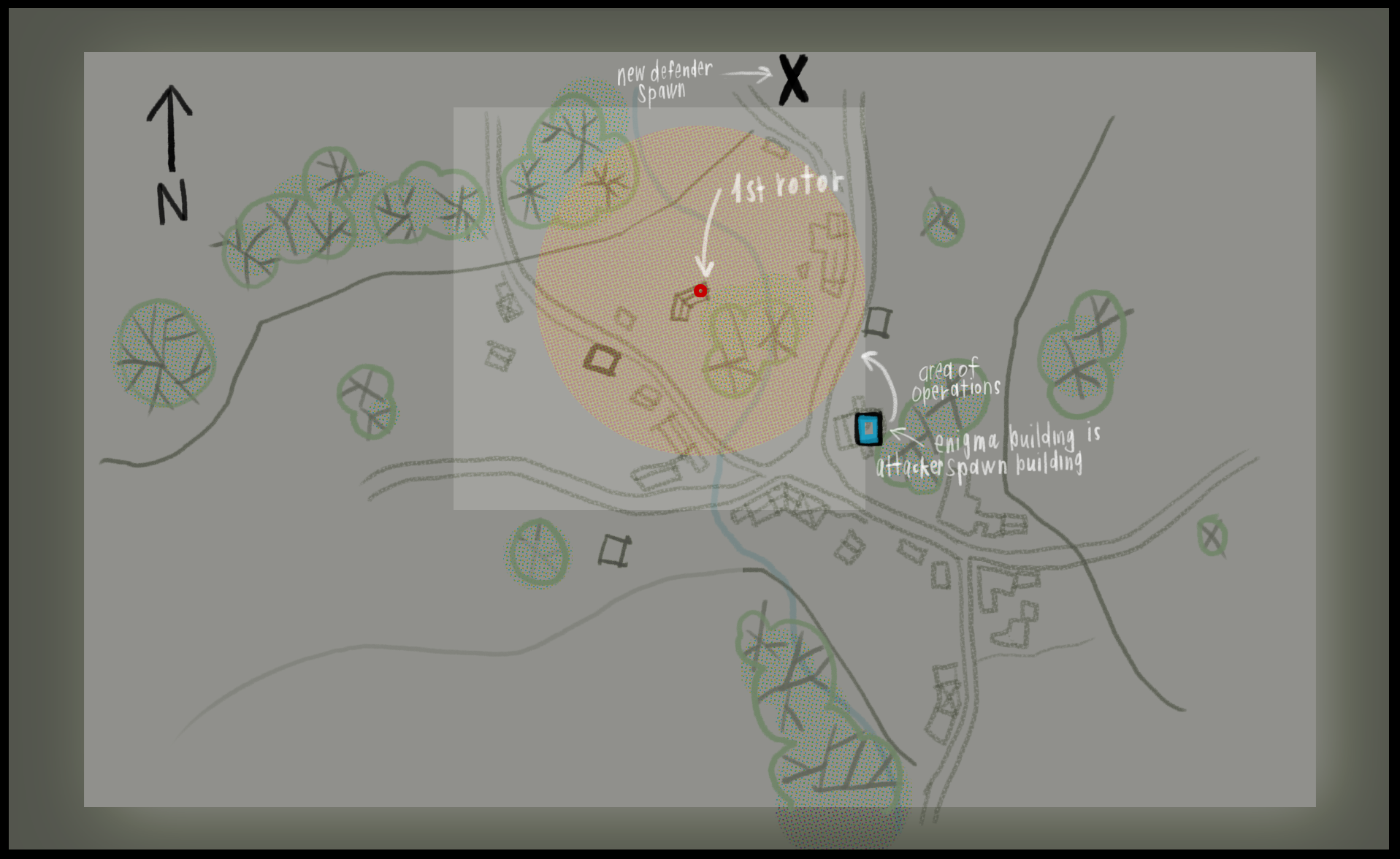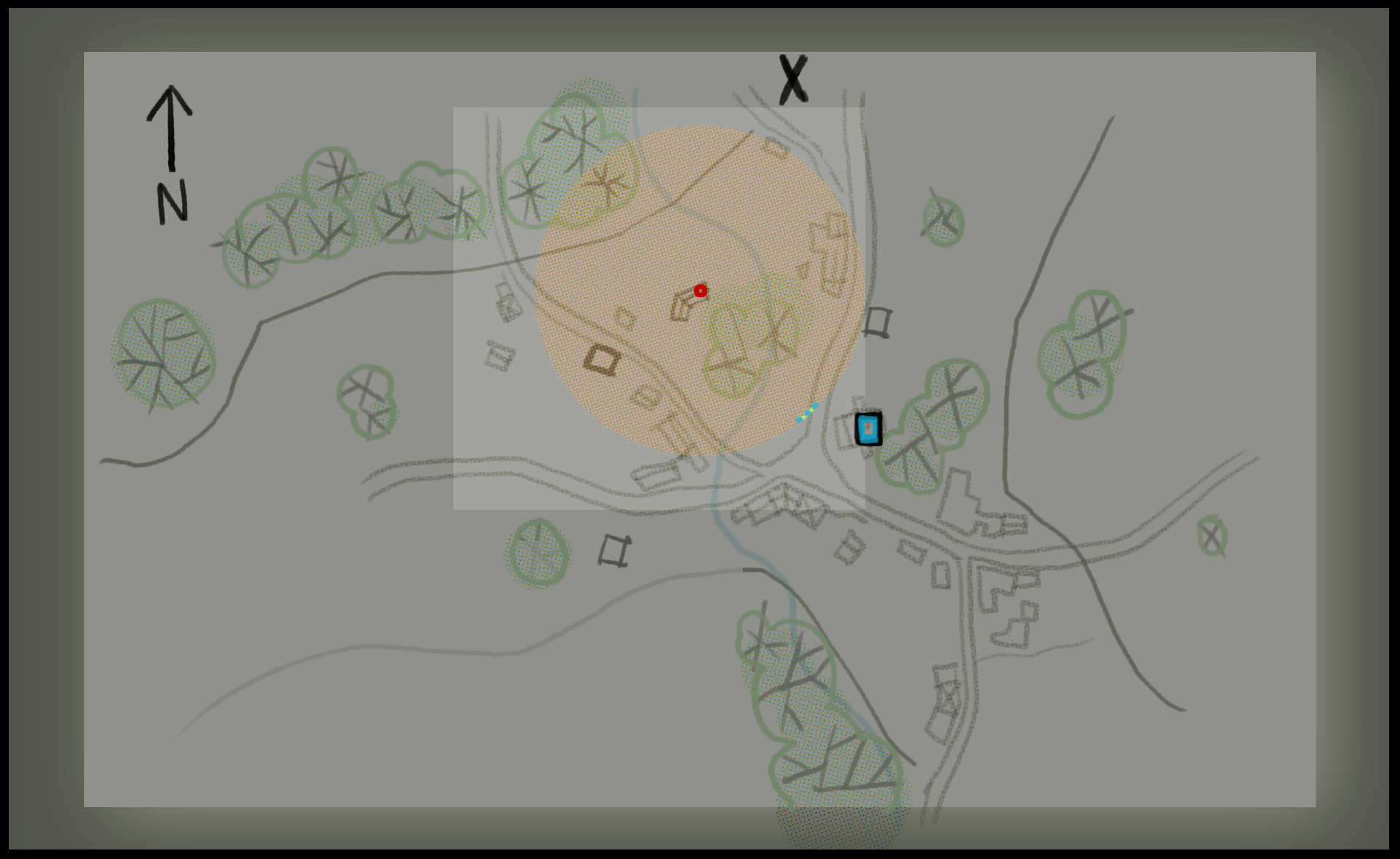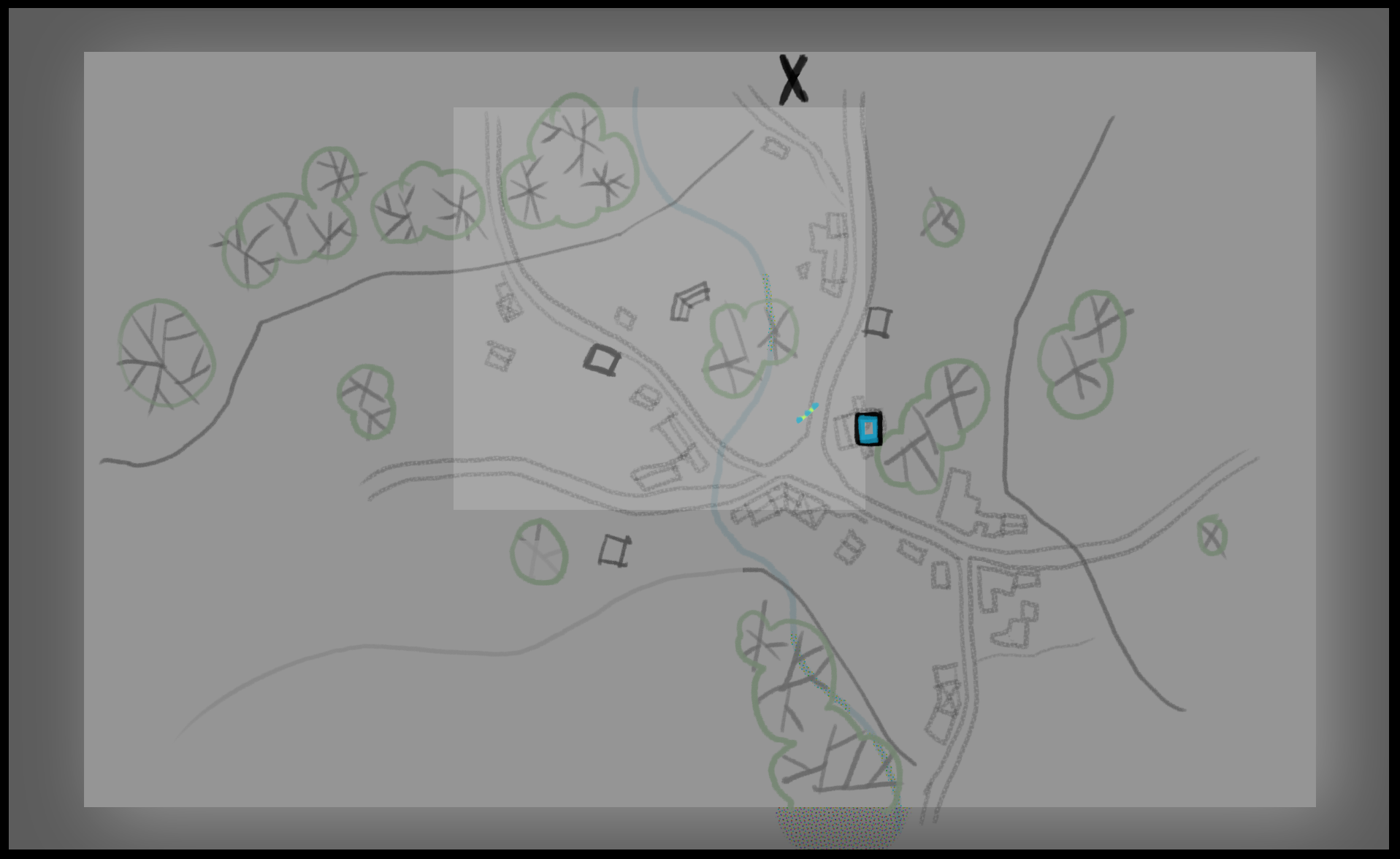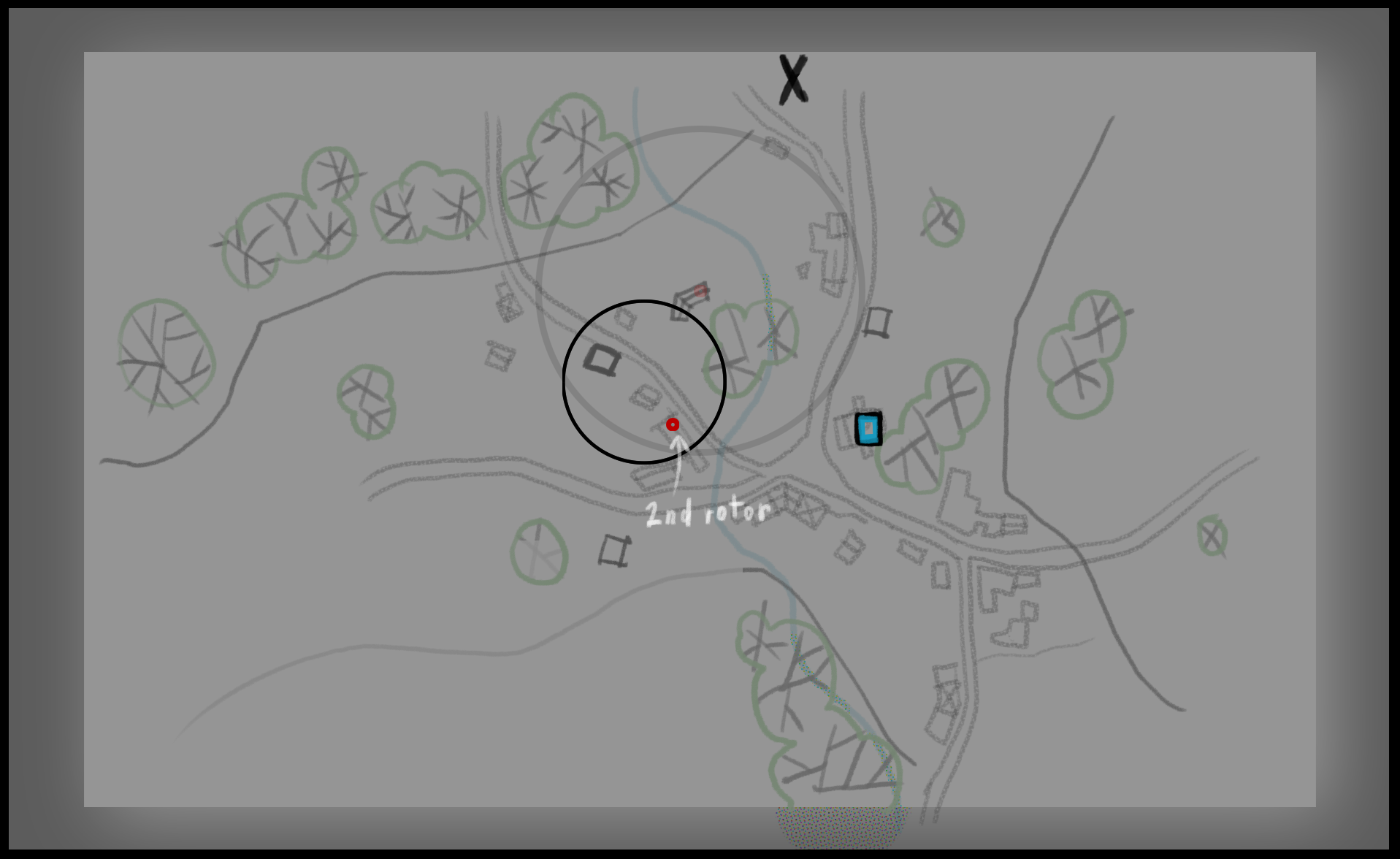LEVEL CONCEPTS, EXPERIMENTS, AND PROTOTYPES
A sampling of work from the pre-production of several games
This was a heavily researched architectural/environmental style guide + speculative level design document, including preliminary ideas about harnessing the biome and vernacular building styles for gameplay, and potential ways of building modular systems to work with the urban form. This was an in-progress first iteration of the guide (some pages are rough or unfinished). the early Exiles project this was designed for was canceled when Insurgency: Sandstorm was greenlit.
A concept for Day of Infamy. Normandy environment.
Some 2d work to accompany level design blockouts, game design concepts, etc.
Architectural building and trim prototyping for Insurgency: Sandstorm. This was the first phase of development of the modular kits we would use in Insurgency Sandstorm. I would go on to design and build the lion’s share of the trim meshes for the game.
Narrative arc in an extraction shooter? This is a presentation I put together for a level prototype I led for a First Playable milestone. The idea here is taking a slice of a much larger map and demonstrating how a future AI Storyteller could utilize different map variables (lighting, pathing, weather and terrain conditions, objectives, etc.) to overlay two differing playthroughs on it. It was important that replayability be a product of this, but just as important was the narrative arc the Storyteller would create to maximize player experience. At its disposal would be a 1km² map and a whole host of variable conditions through which it would plot a route along a selection of the carefully designed array of POIs and interstitial spaces that become building blocks for the pacing of objectives and combat. In these examples, the spatial geometry, combat intensity, objective placement, and resupply form 2 clear 3 act arcs.
Lightbox images of the above slide show
this final prototype was sliced from a much larger map, represented here as a patchwork of zones.
The initial ambition for the prototype was that a basic AI Storyteller would chart different objective-based paths through the map and trigger variable conditions (route obstructions, prop placement, varying levels of risk and reward) along the way that affect the route.
When the AI Storyteller proved more difficult than planned, we decided to focus on one possible route.
We kept it simple, along the most conceptually strong stretch of the map, the lakeside.
We spoke to the ambitions of an AI Storyteller and the coop experience we wanted to create by crafting a 3 act narrative arc in the action along the lake.
We then crafted two playthroughs to reflect the impending whims of AI Storyteller.
The first playthrough is a straightforward route along a railway on the lakefront
objective points are embedded in each of the three acts, different in each playthrough.
A rhythm of combat and resupply is established as a placeholder for a more dynamic Storyteller.
The second playthrough sees a slight change in the weather, but significant change to the navigation of the map due to flooding
and the destruction of the railway bridge over the inlet.
necessitating a raft and cable crossing closer to shore.
and then through the village from another direction.
Composition of level geometry always serves to move the gameplay story forward.
These are linear objective experiences through a larger map
The story of the map unfolds cinematically in the player camera with this view of the final objective. The arc of the coastline speaks to the long story ahead.
A guide to the variable differences in each playthrough. In principle, these variables become so granular that there are functionally unlimited combinations.
a resupply, which is encoded into the map by its form, color, and compositional isolation
There's a bridge between each of the three acts in the story. In this playthrough, the bridge is intact.
Once across the bridge, headlights indicate the route, while the players all recognize the isolated orange light as a side track to a resupply
The fishing village in playthrough 1, with its network of paths and vertical layers
objective location
in this playthrough, the water is shallow enough to wade through.
The environment (both permanent and variable elements) guide the players through the level.
The moon, which stays put while the environment shifts around the players, shows up intermittently to show the way
cinematic lighting supplements this
as the players move into the darkness and the moon recedes...
The finale area in the story arc comes into view again through a break in the trees.
and as the moon disappears behind the topography, a slot of light along the path takes the story to a new setting
resupply
The bridge to act 3.
The finale area isn't affected by large scale navigation changes in either playthrough.
But focuses more on lighting and cover changes, among other small scale variables
The extraction...and a reflection of the moon
The series of paired slides ahead show a sampling of the differences between the two playthroughs. Here we see playthrough 1 again.
Playthrough 2 begins inland along a flooded creek, but there's the moon again through the clouds.
along the length of the train station, there's subtle change to pathing through lighting and variable prop placement.
A subtle hint of light, and, of course, the moon to signal the way forward to the bridge in the first playthrough.
The light hint is replaced with a fire from the destruction of the railway bridge, the moon is obscured by clouds, and an alternate path is highlighted under the railway.
The bridge, itself. Playthrough 1.
And the destroyed bridge and alternate path as it emerges from under the railway in playthrough 2.
playthrough 1 in the village.
The network of pathways and routes through the water are eliminated by the flood in playthrough 2.
different lighting schemes, this one more vulnerable for players.
extraction
these next few pairs of slides show instances of fun gameplay forms in the final level prototype that were curated from earlier, small scale gameplay prototypes.
Initial architectural building and trim prototyping for Day of Infamy (Source Engine)
Experimental gameplay ideas. An idea about territory and intel in a pvp game.



